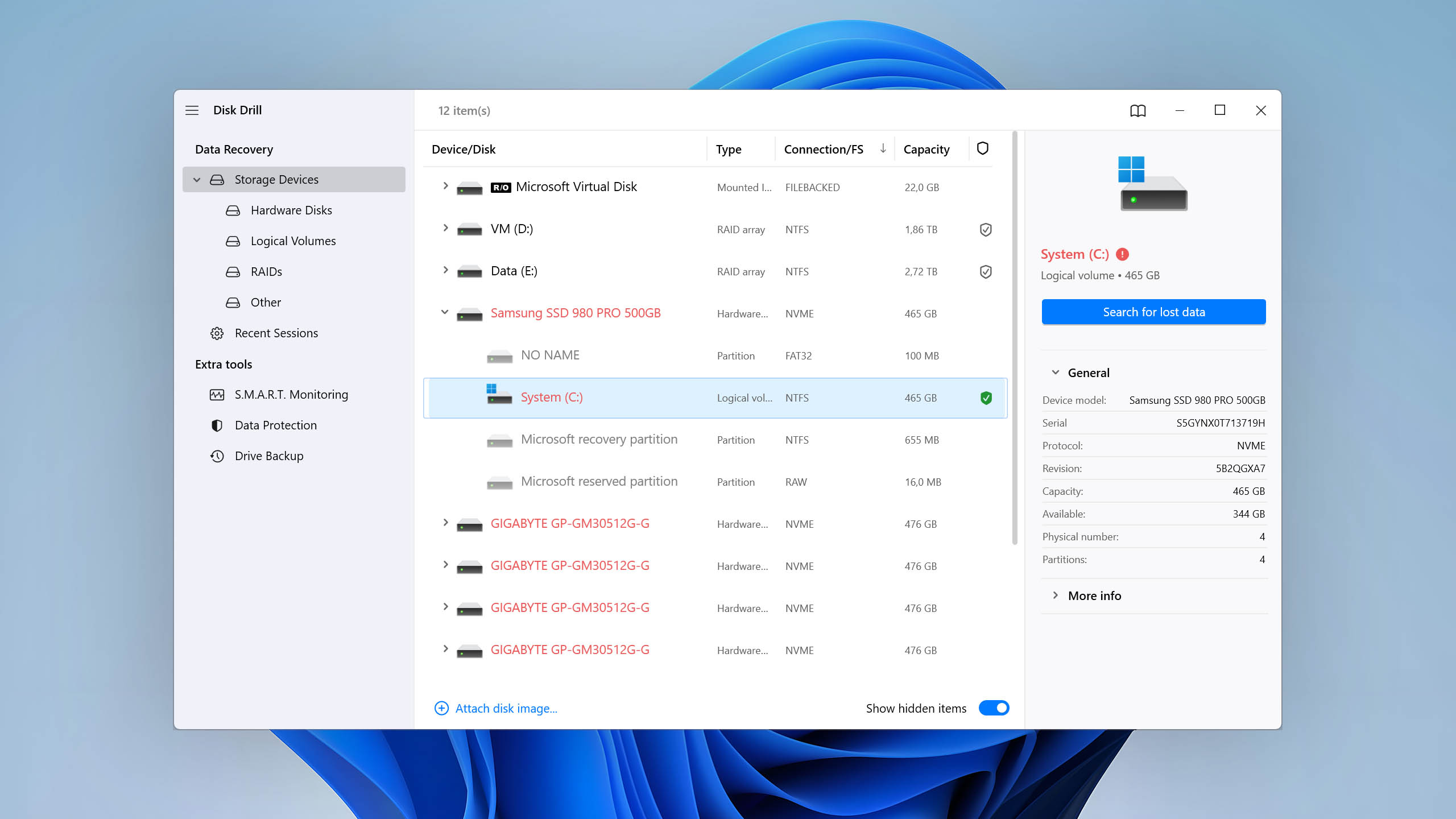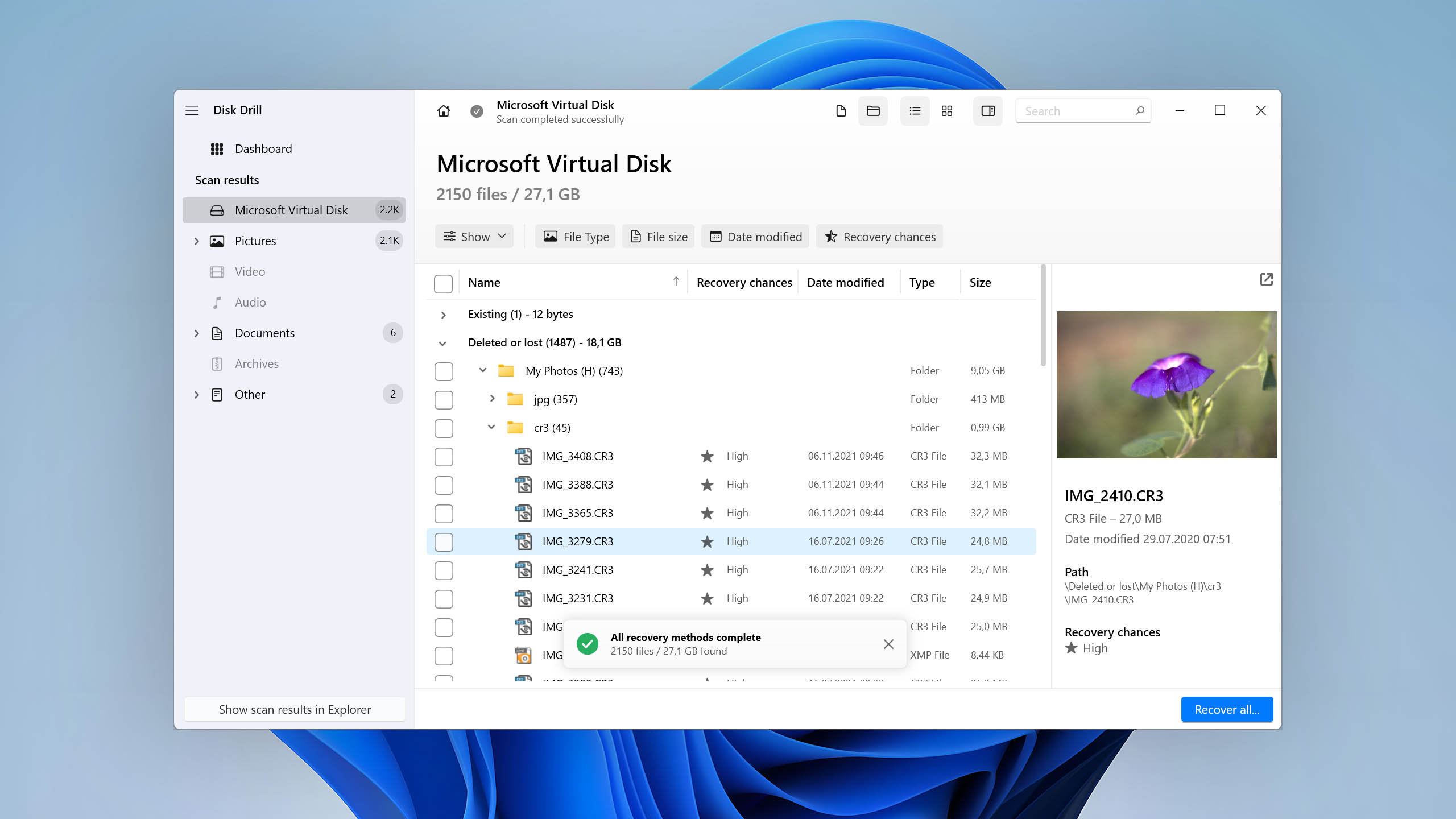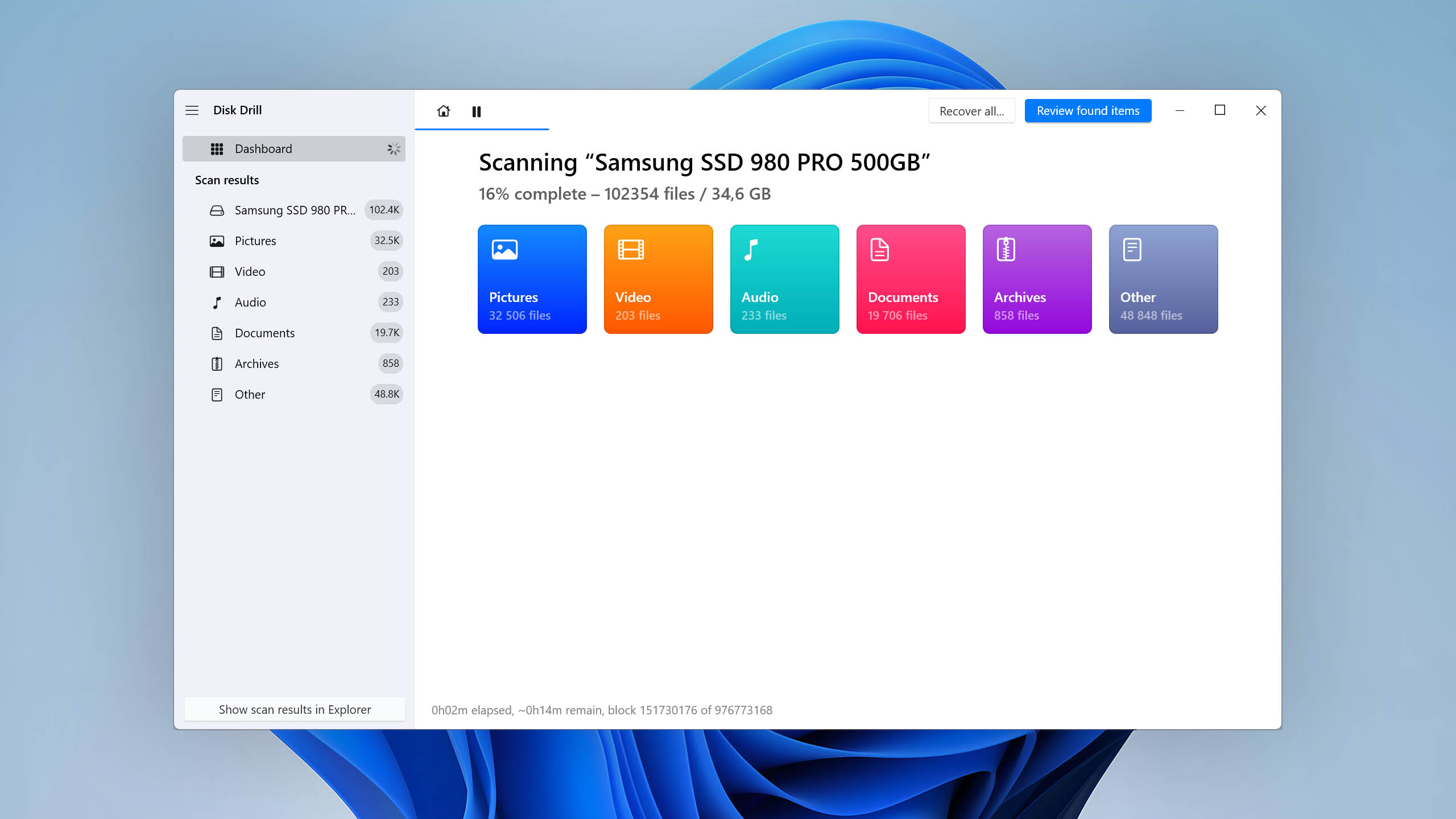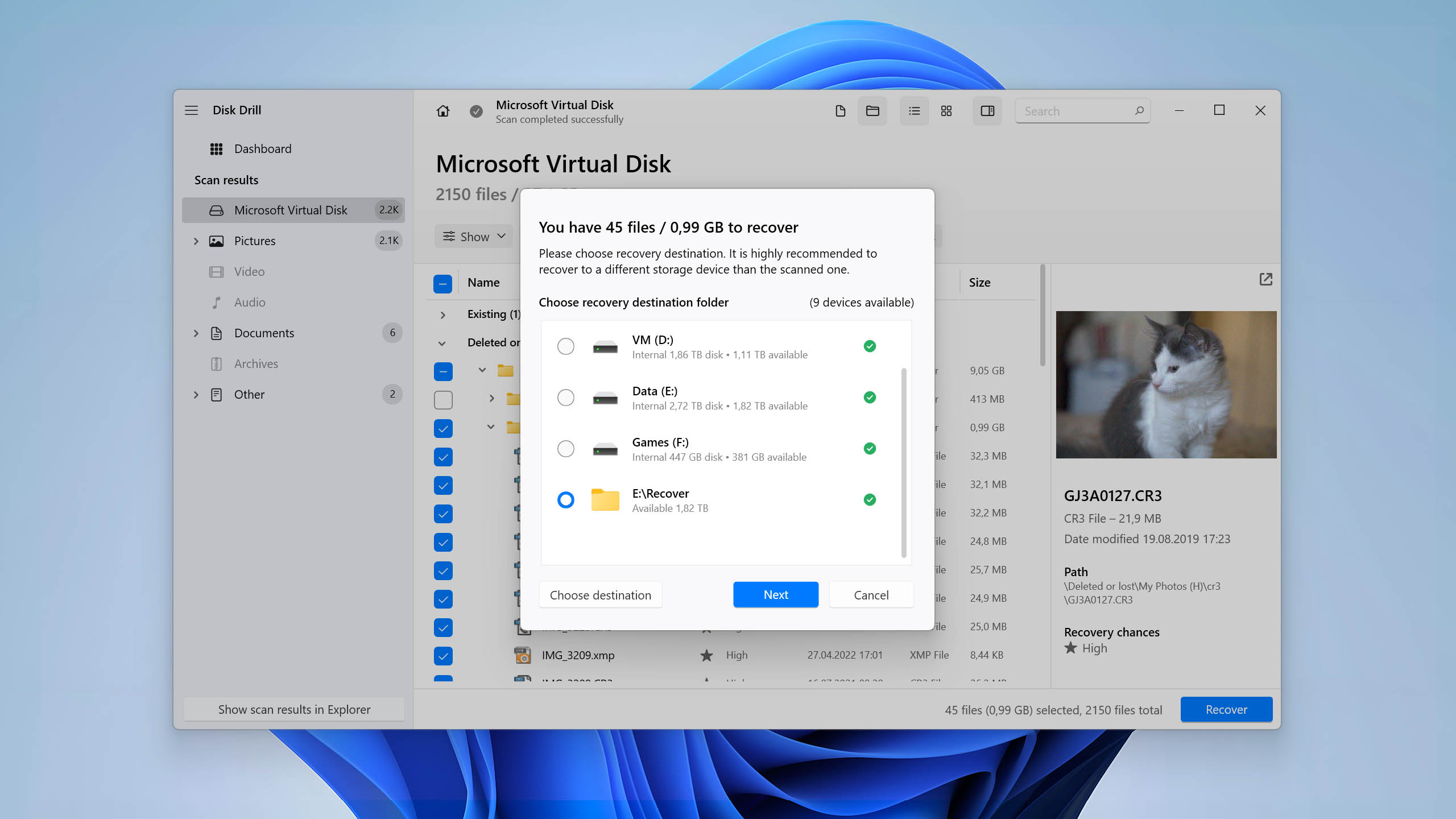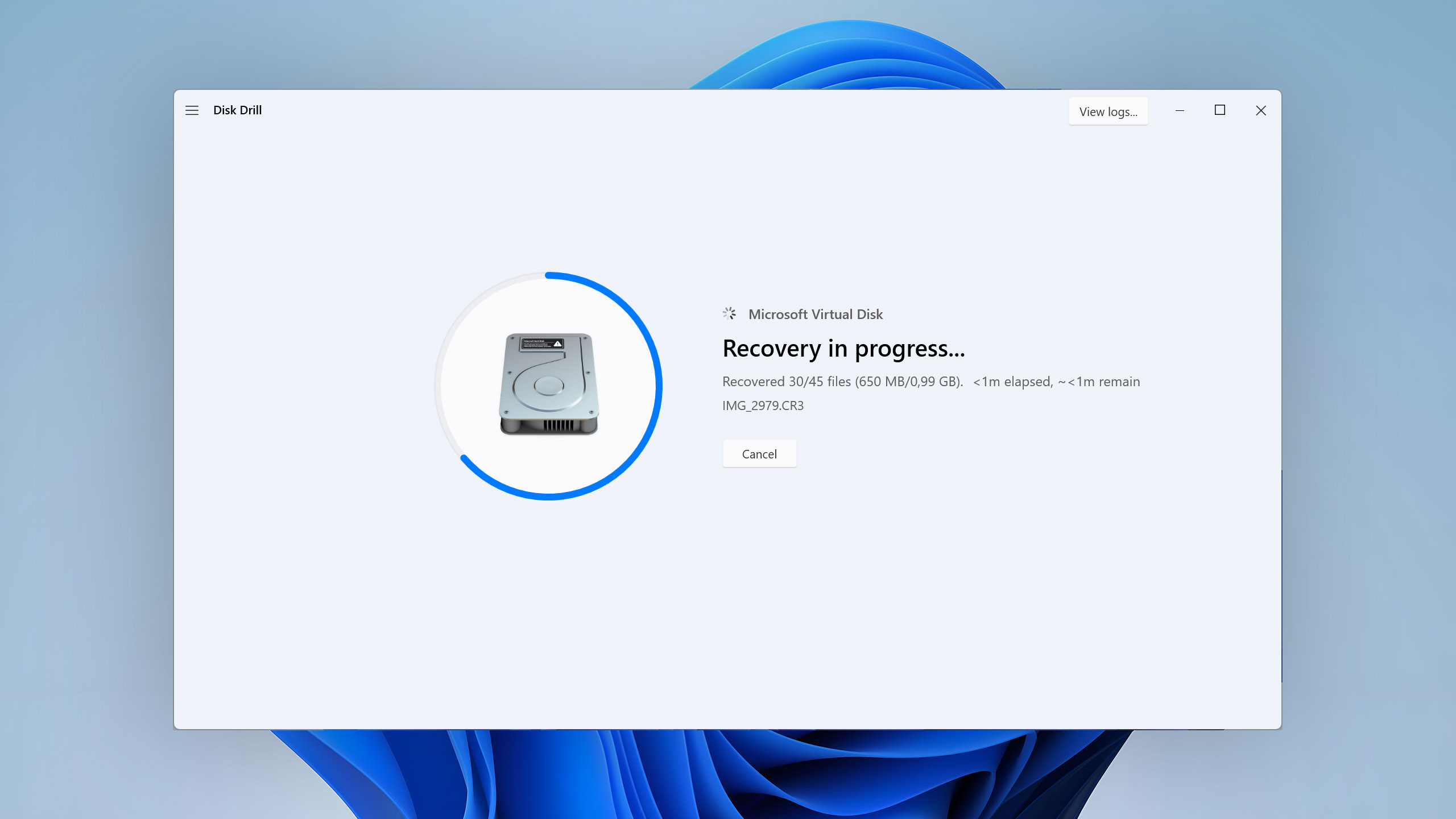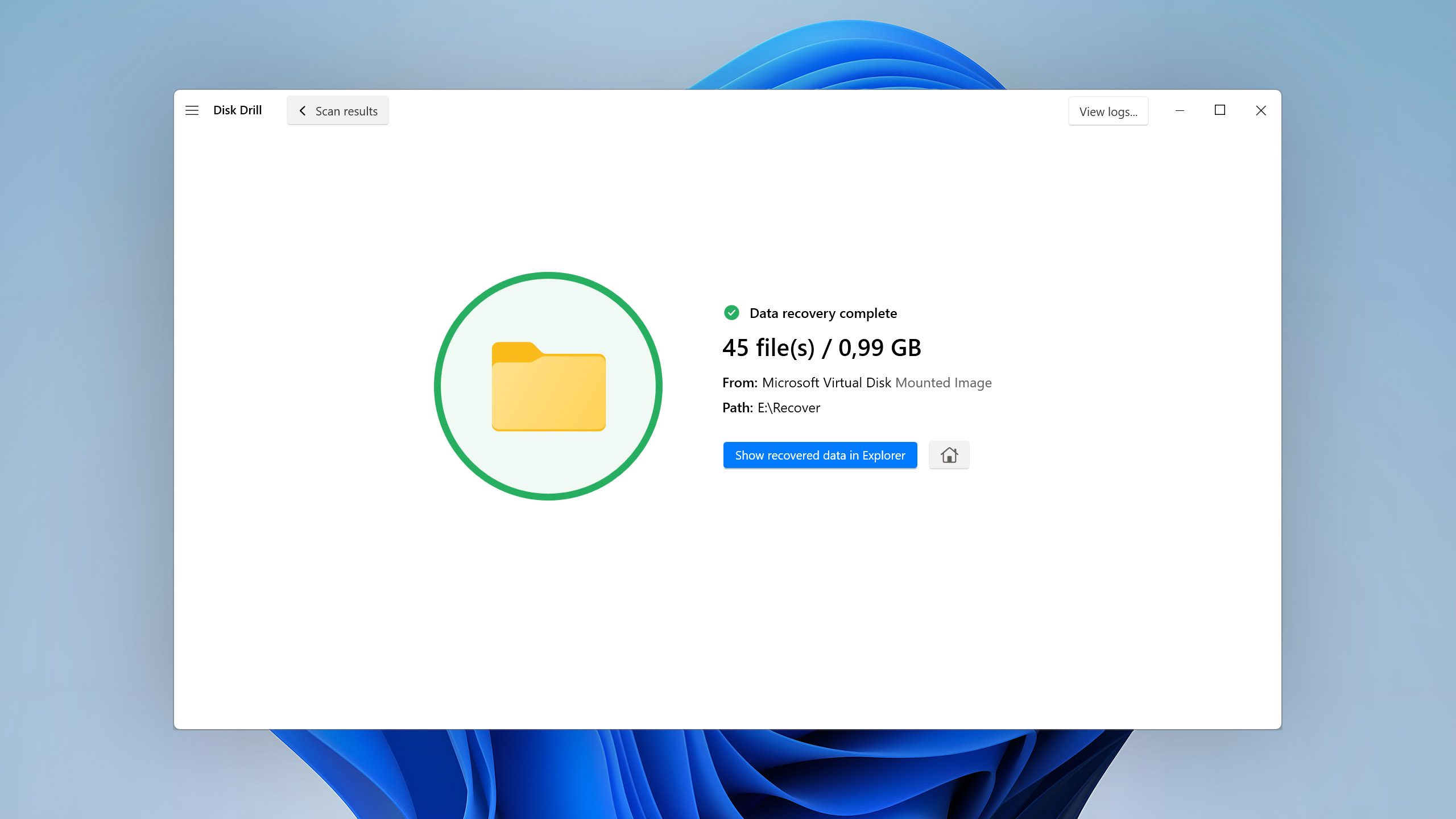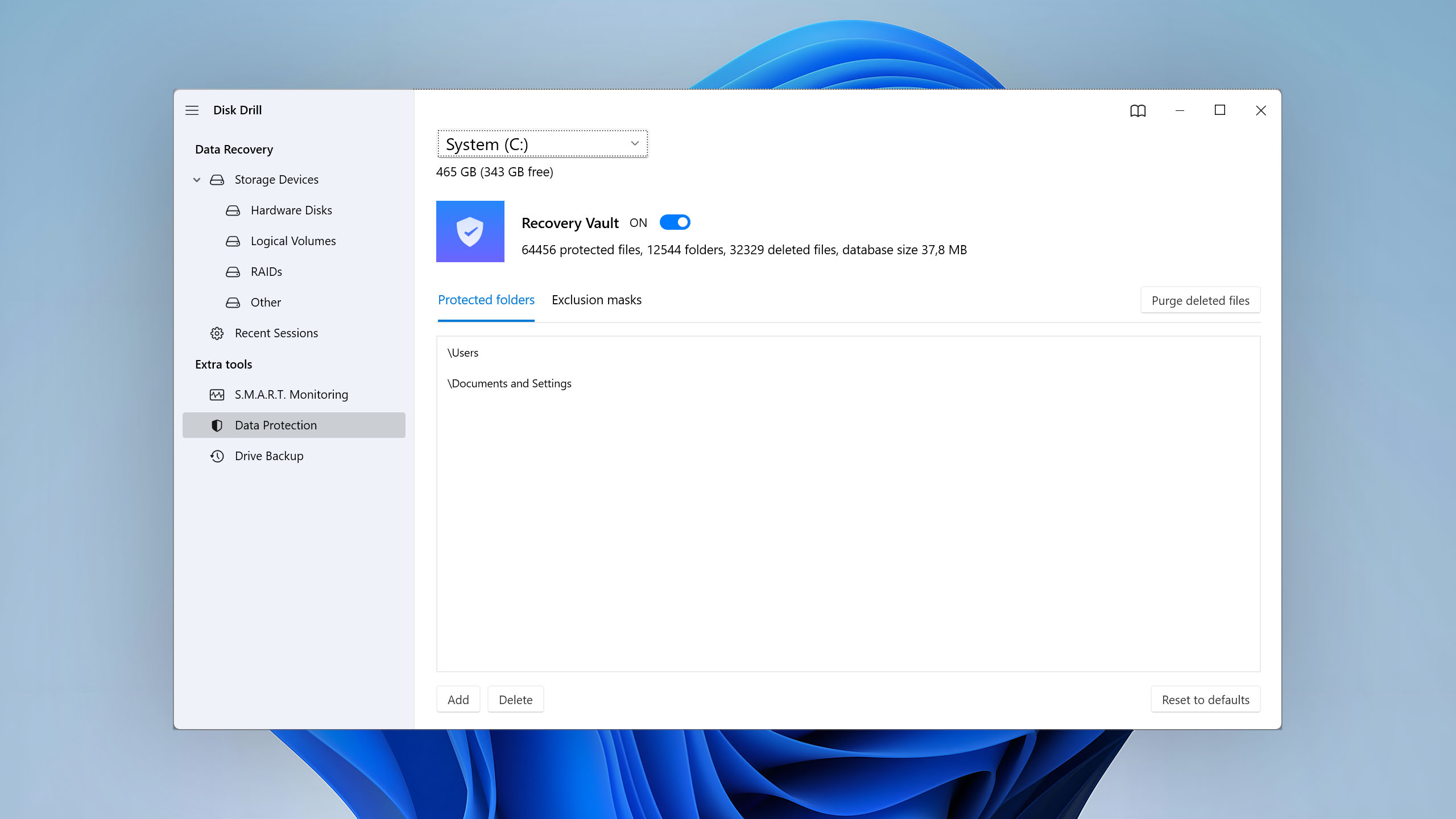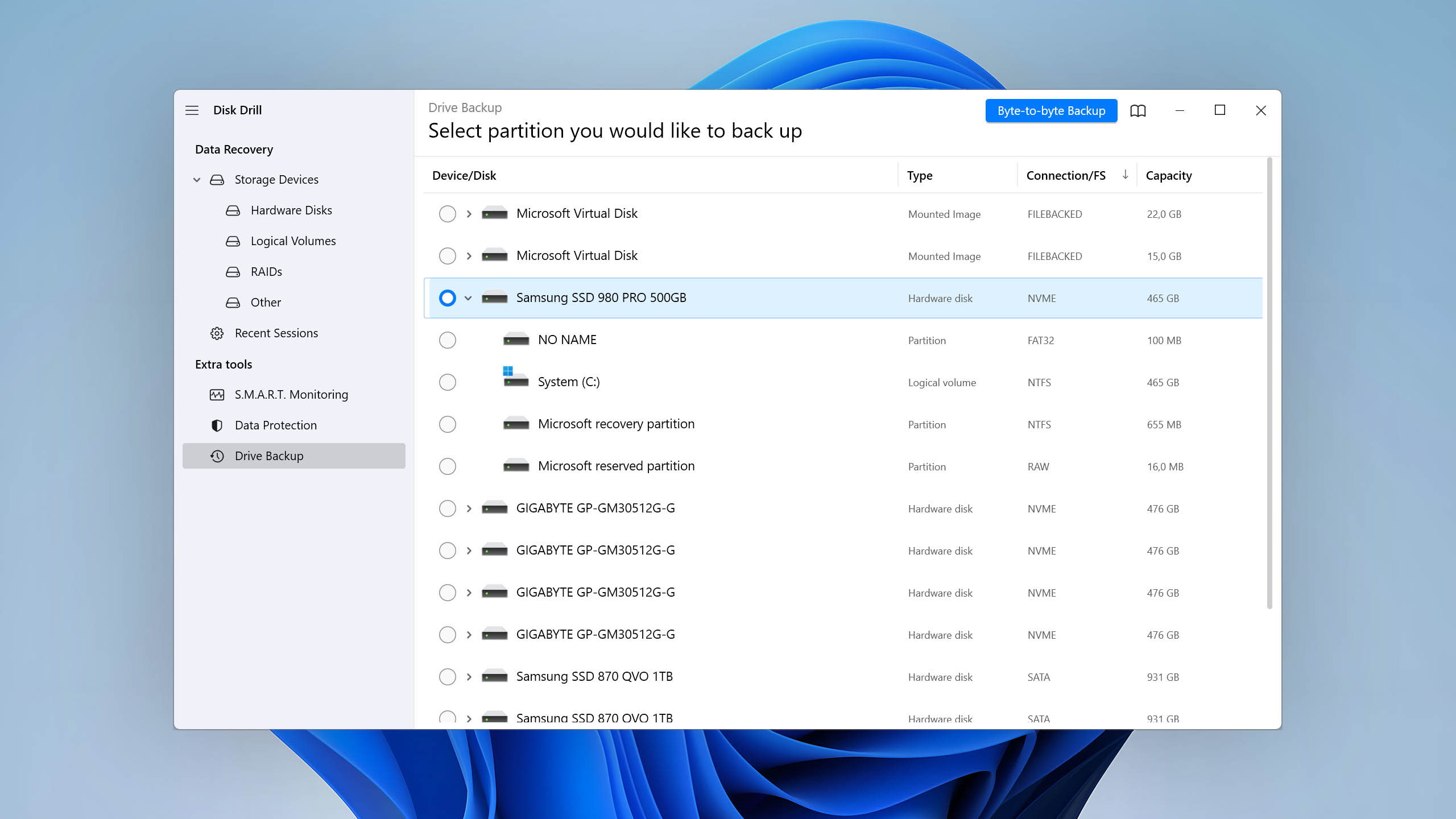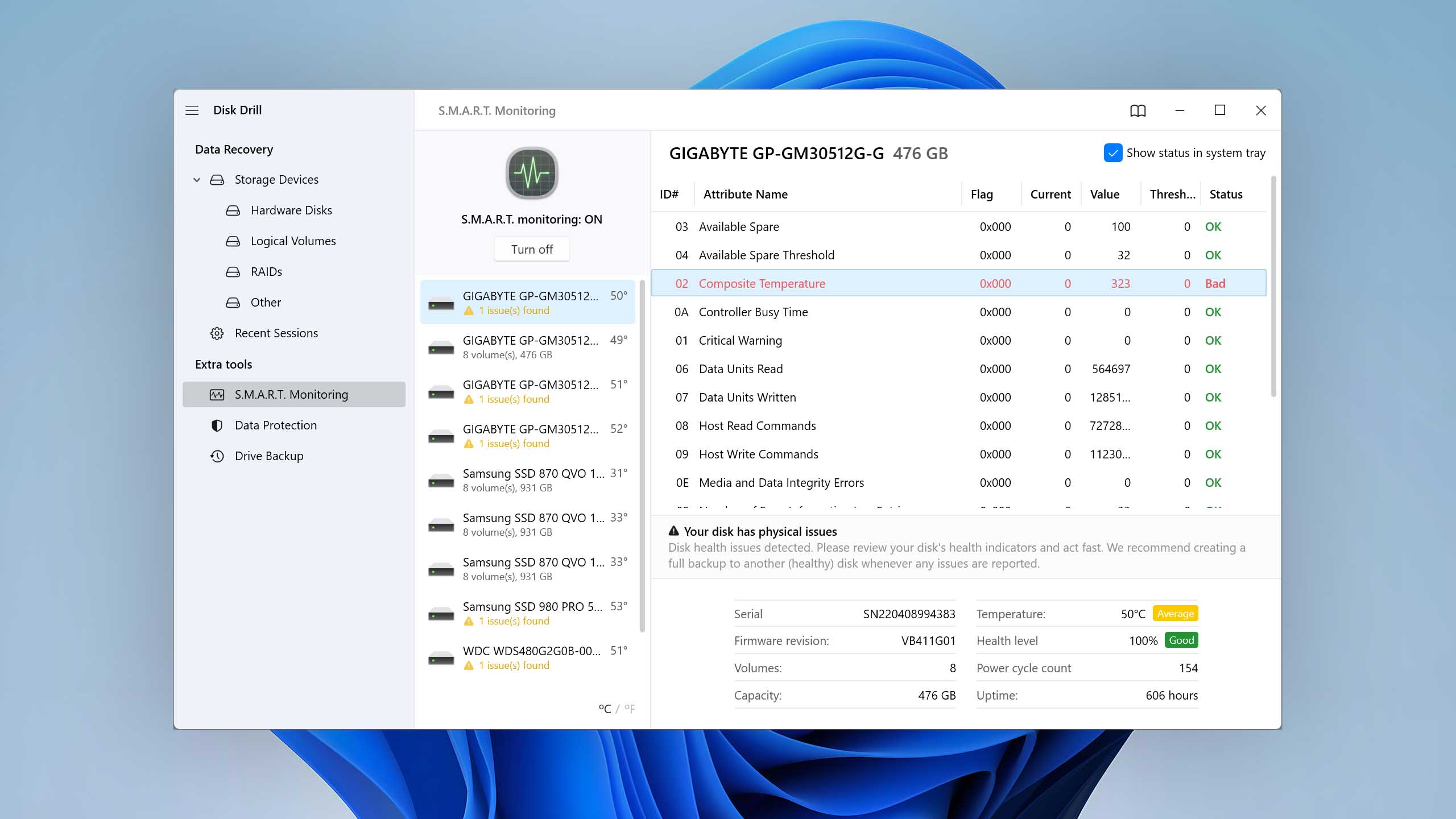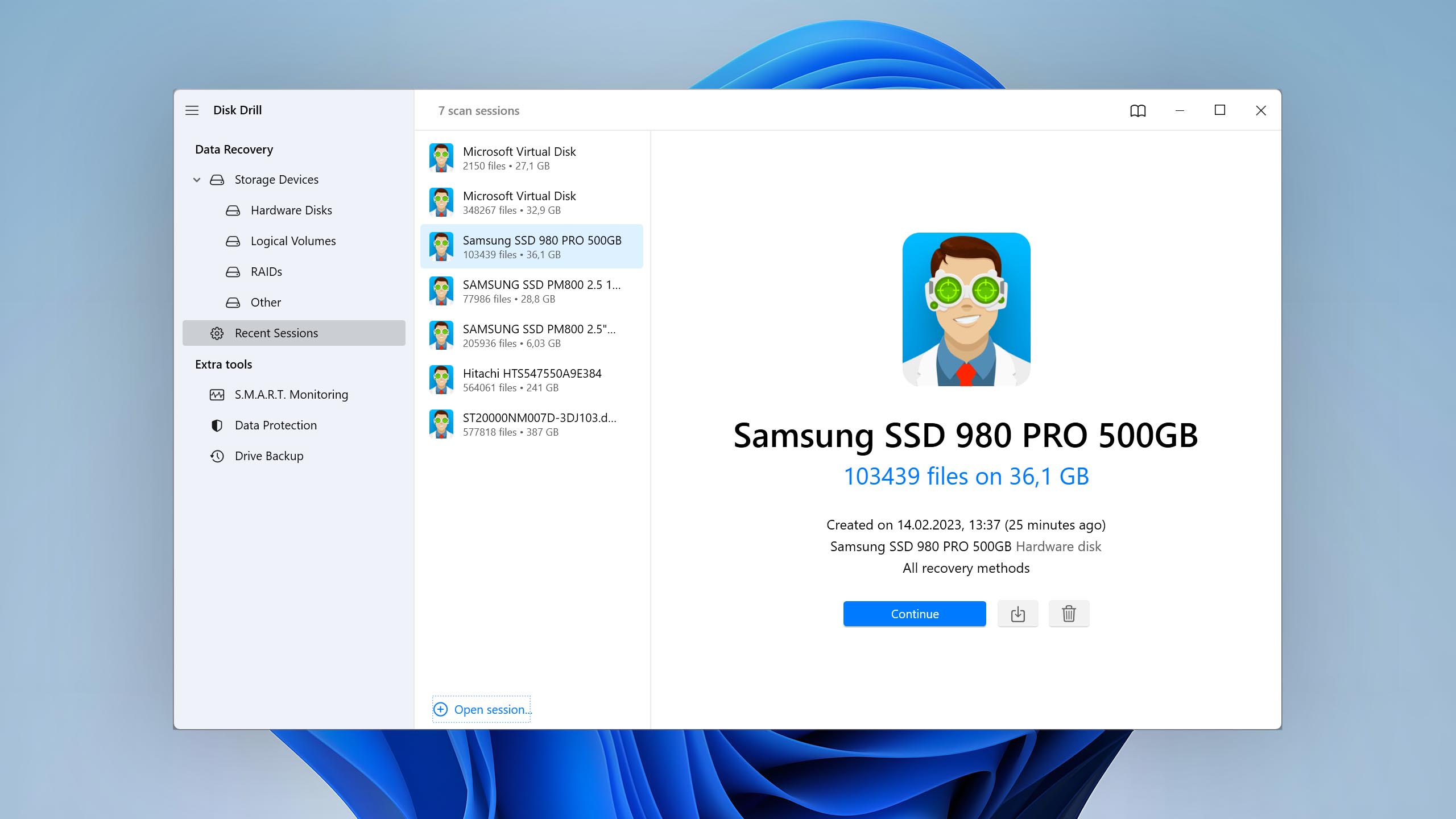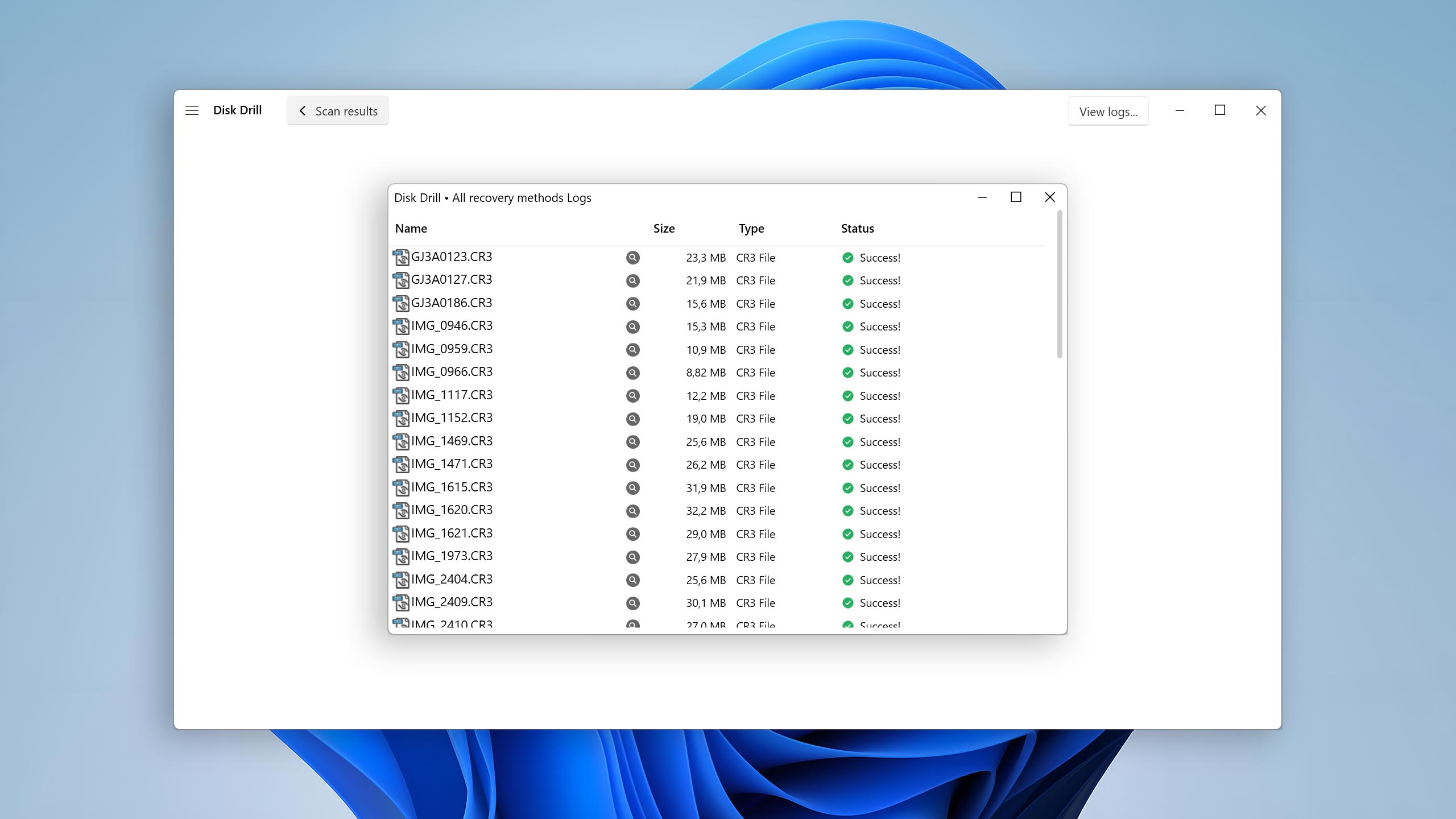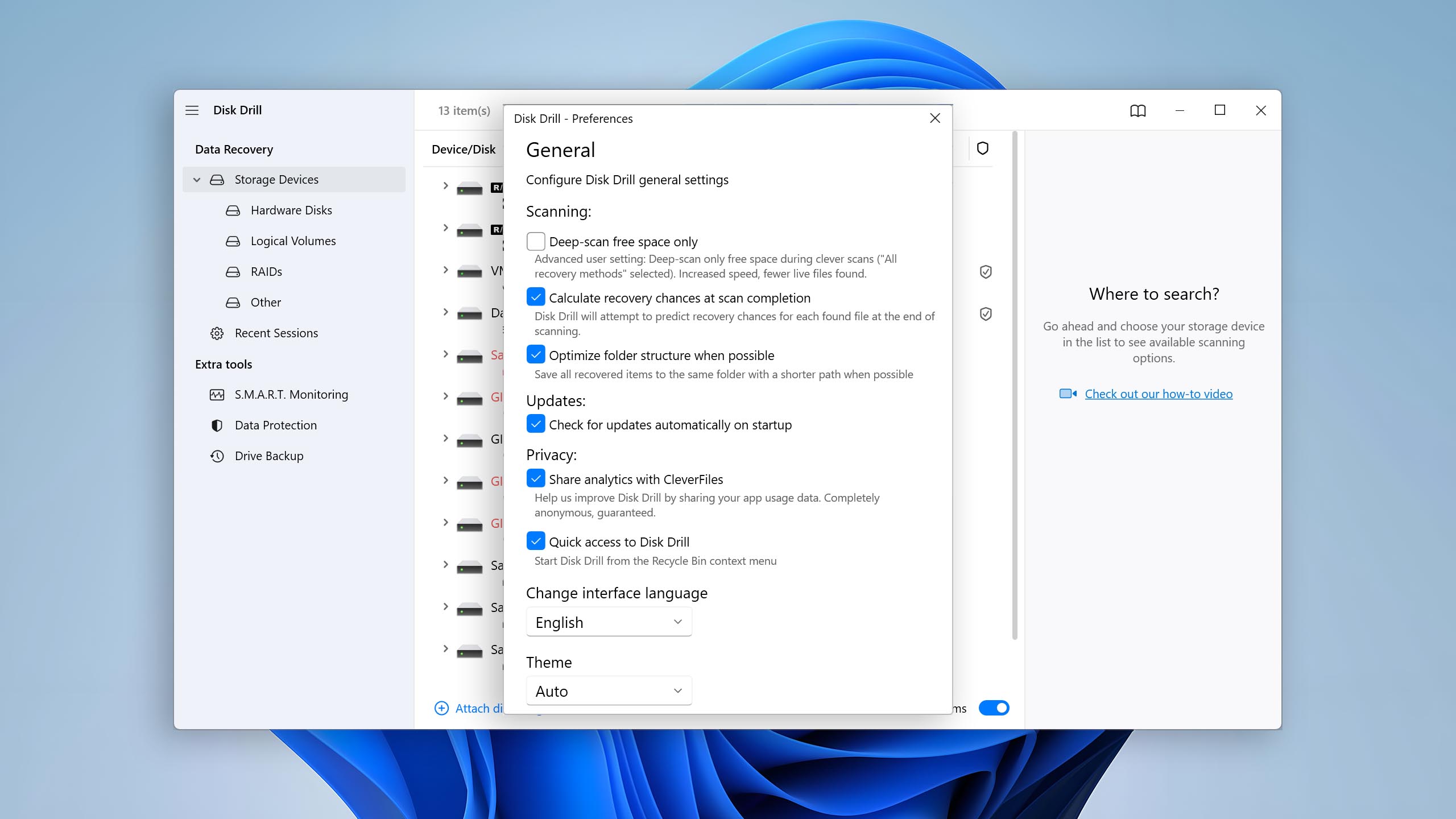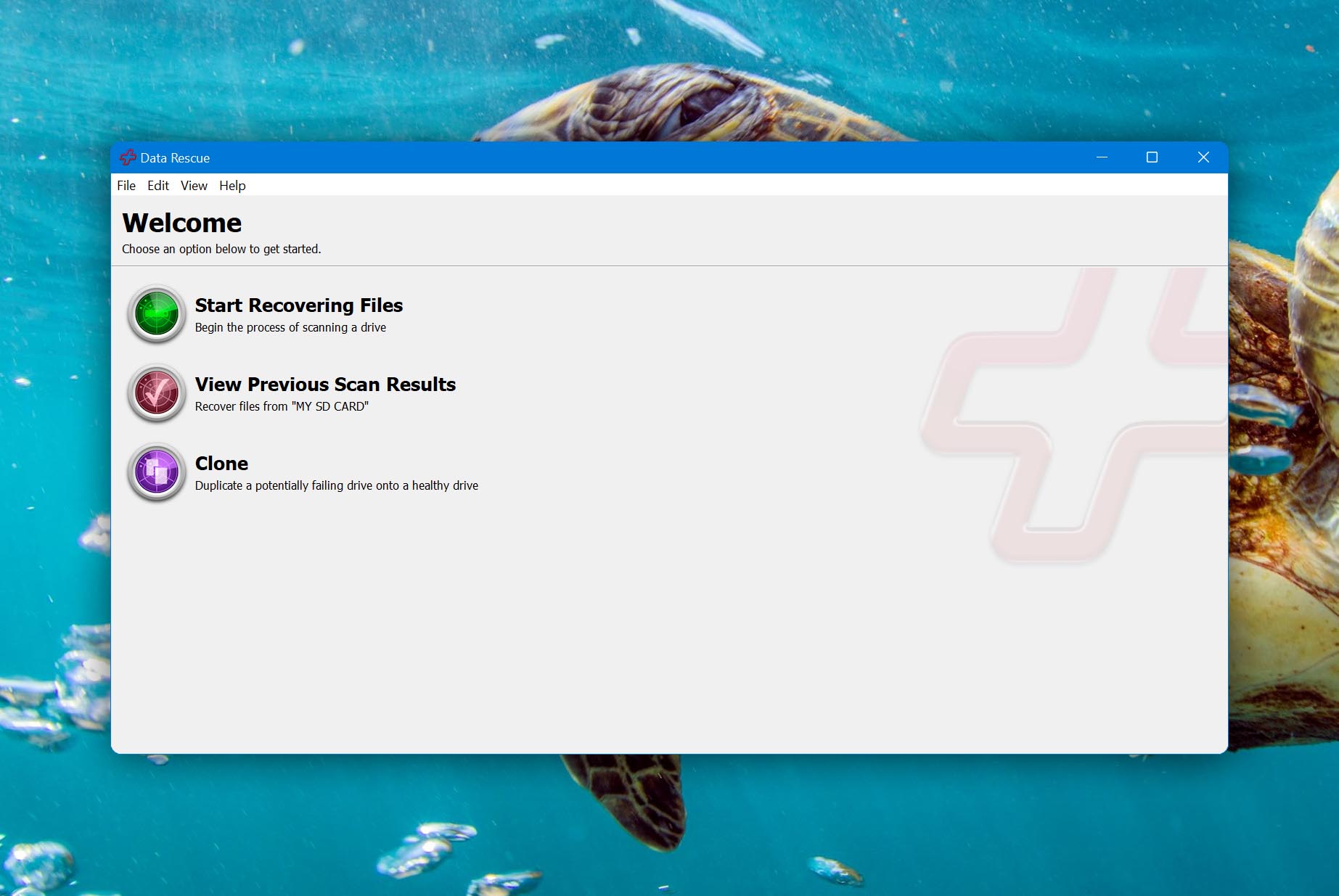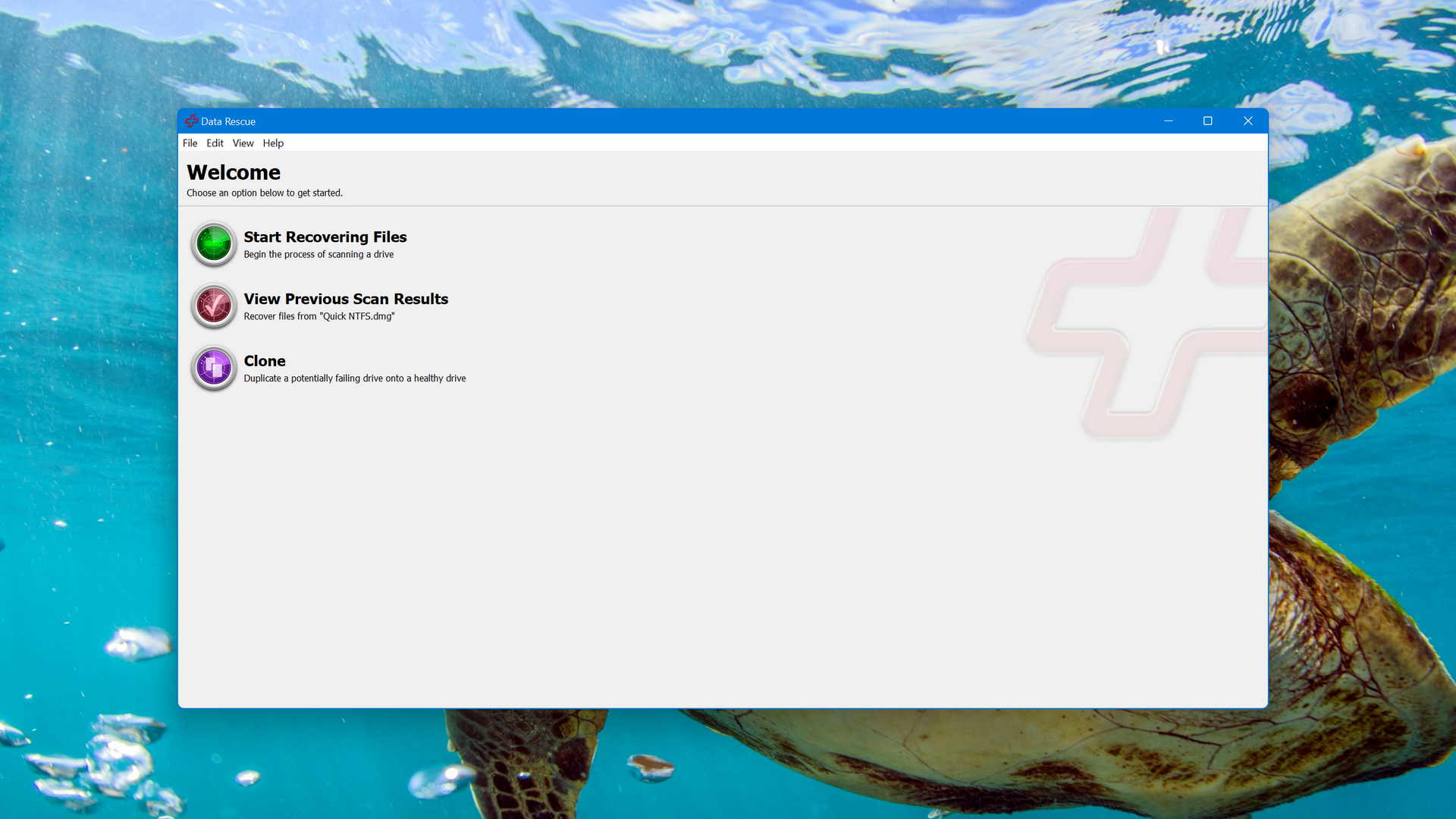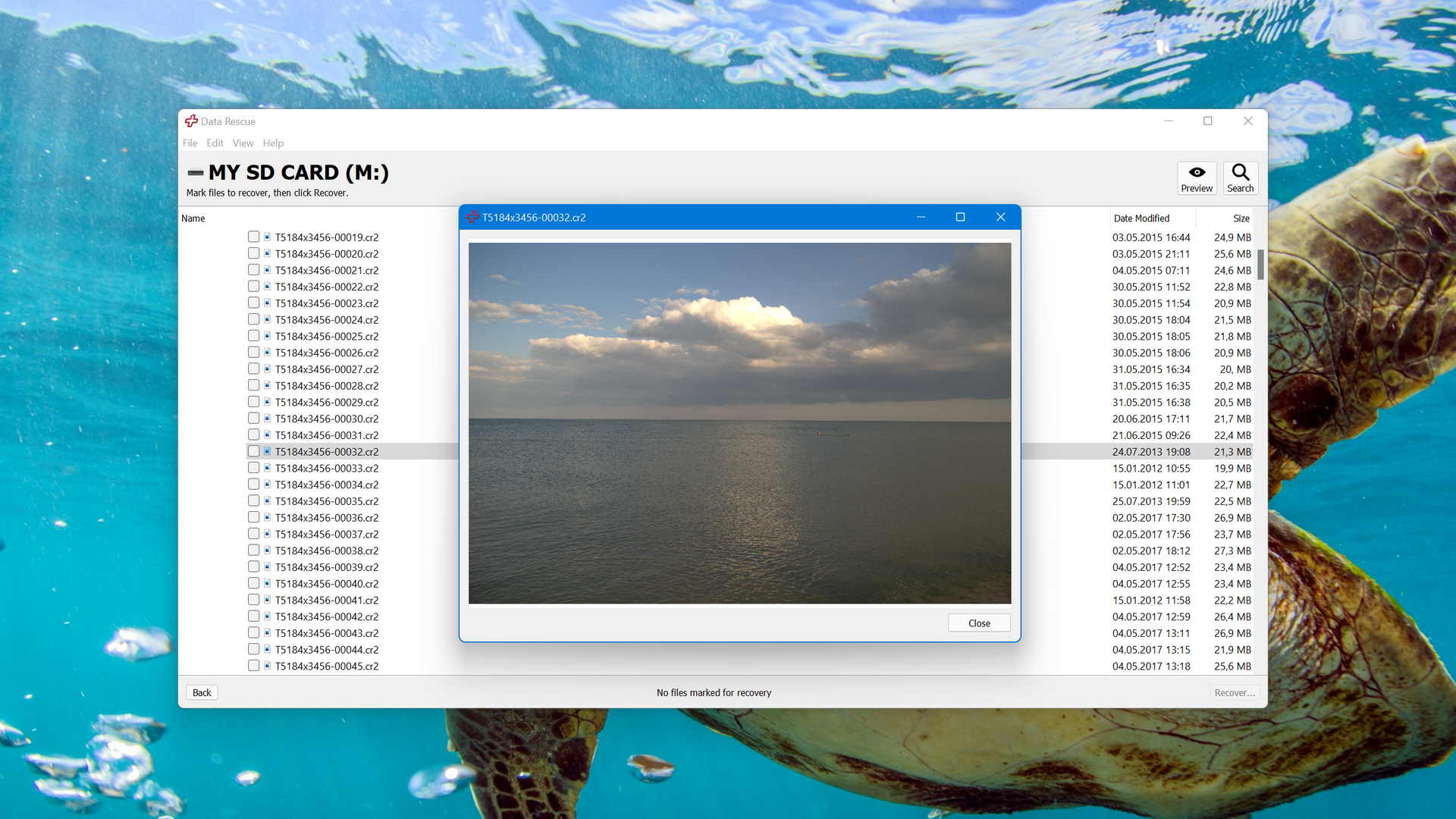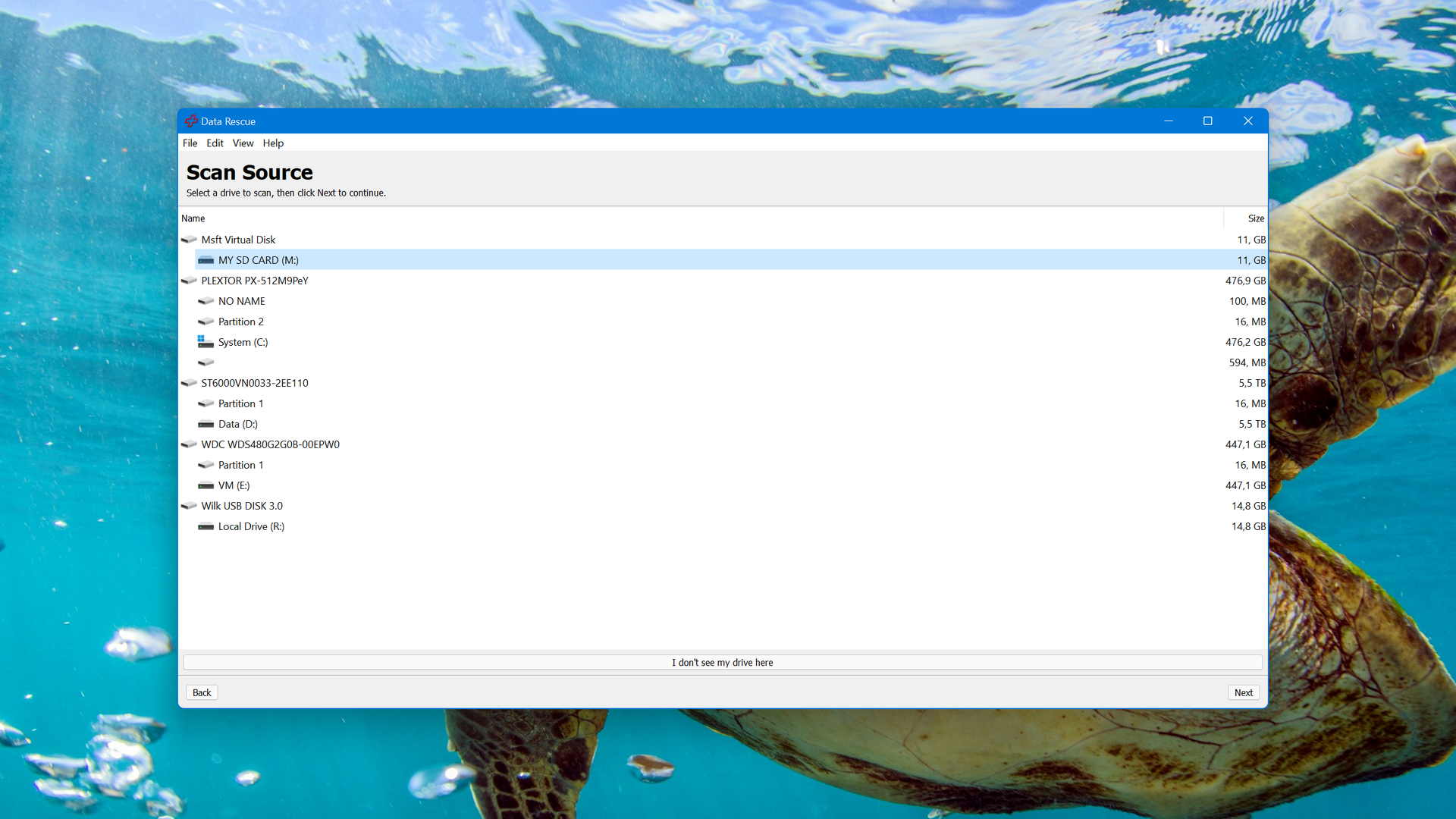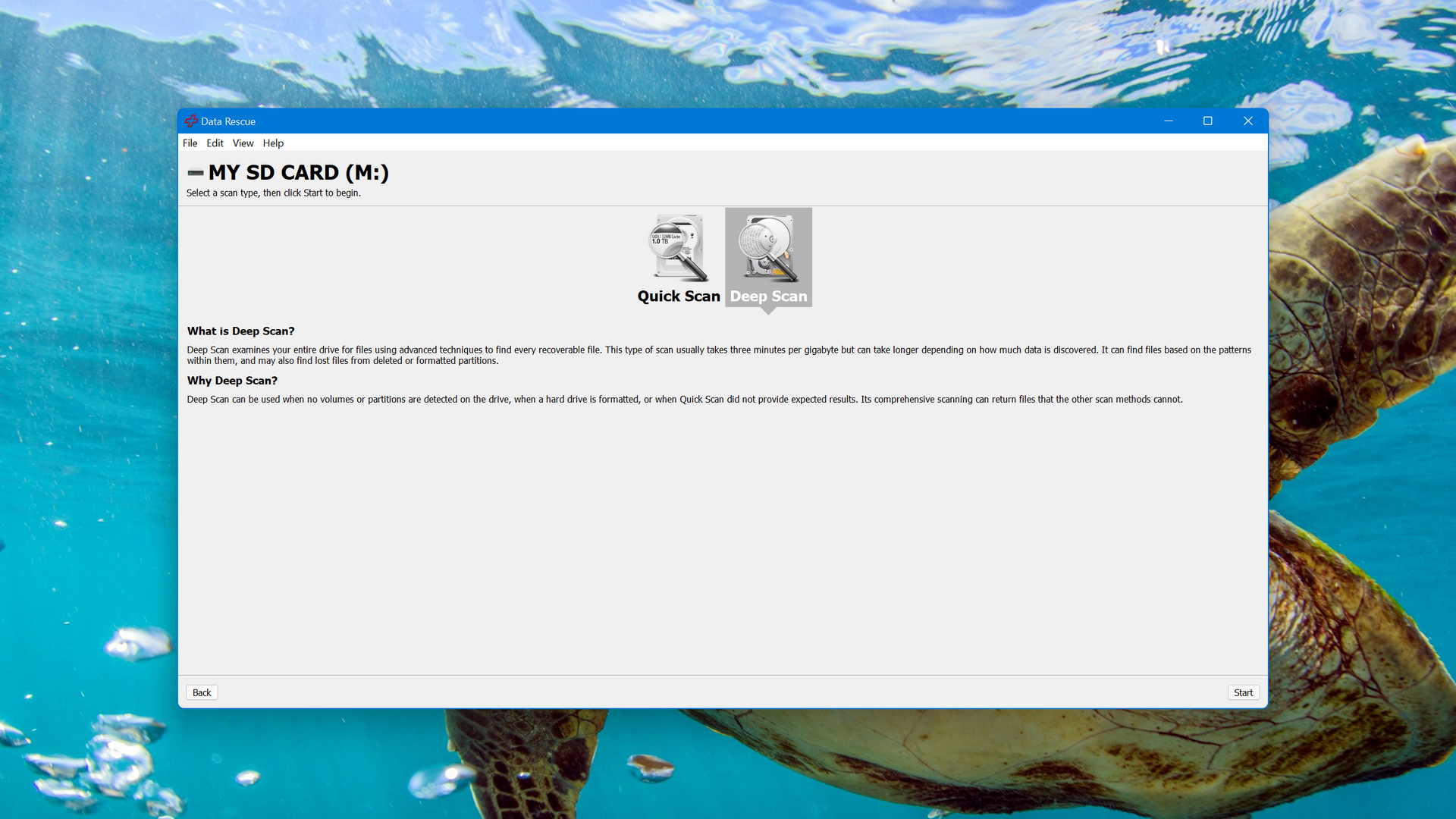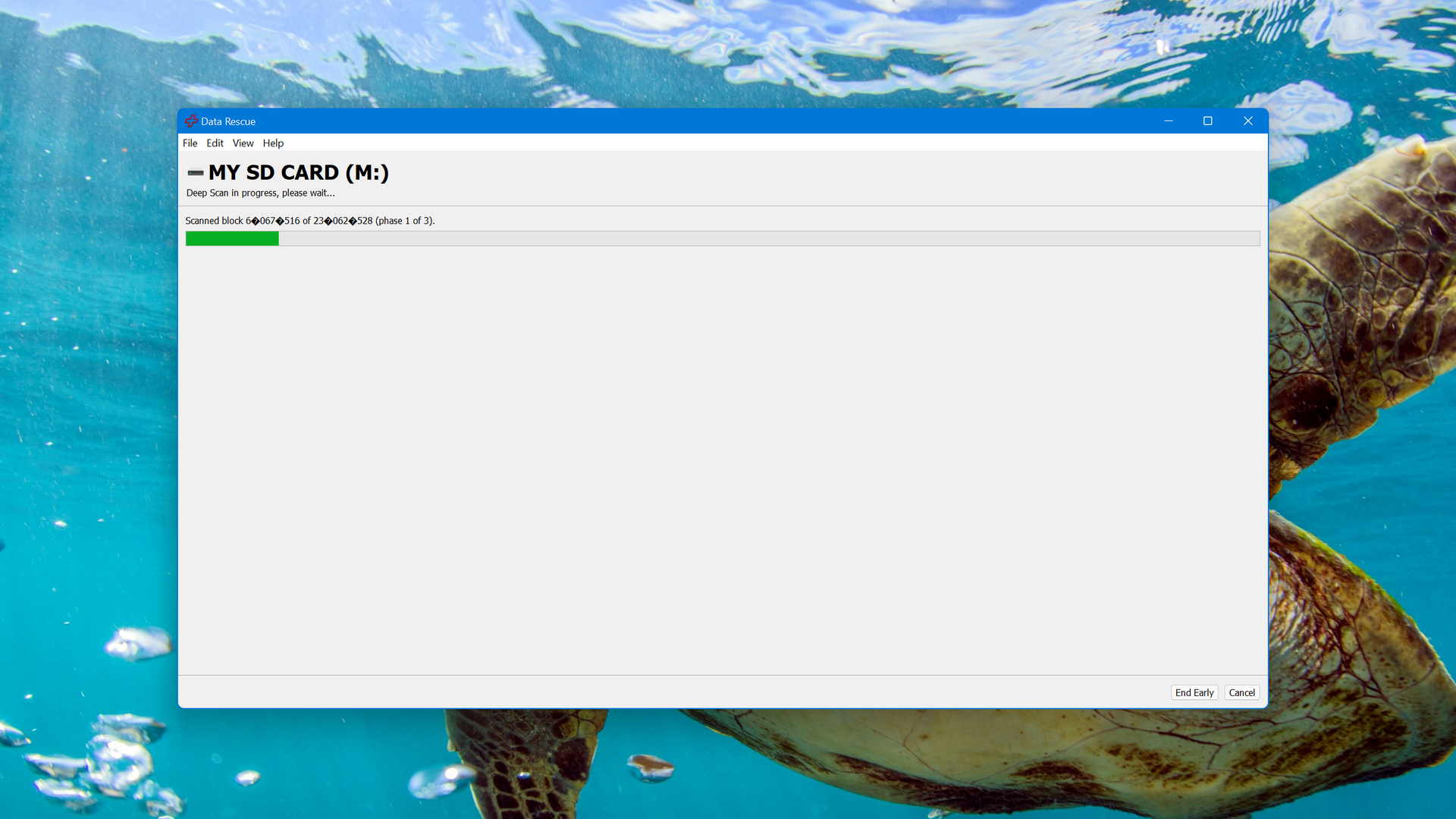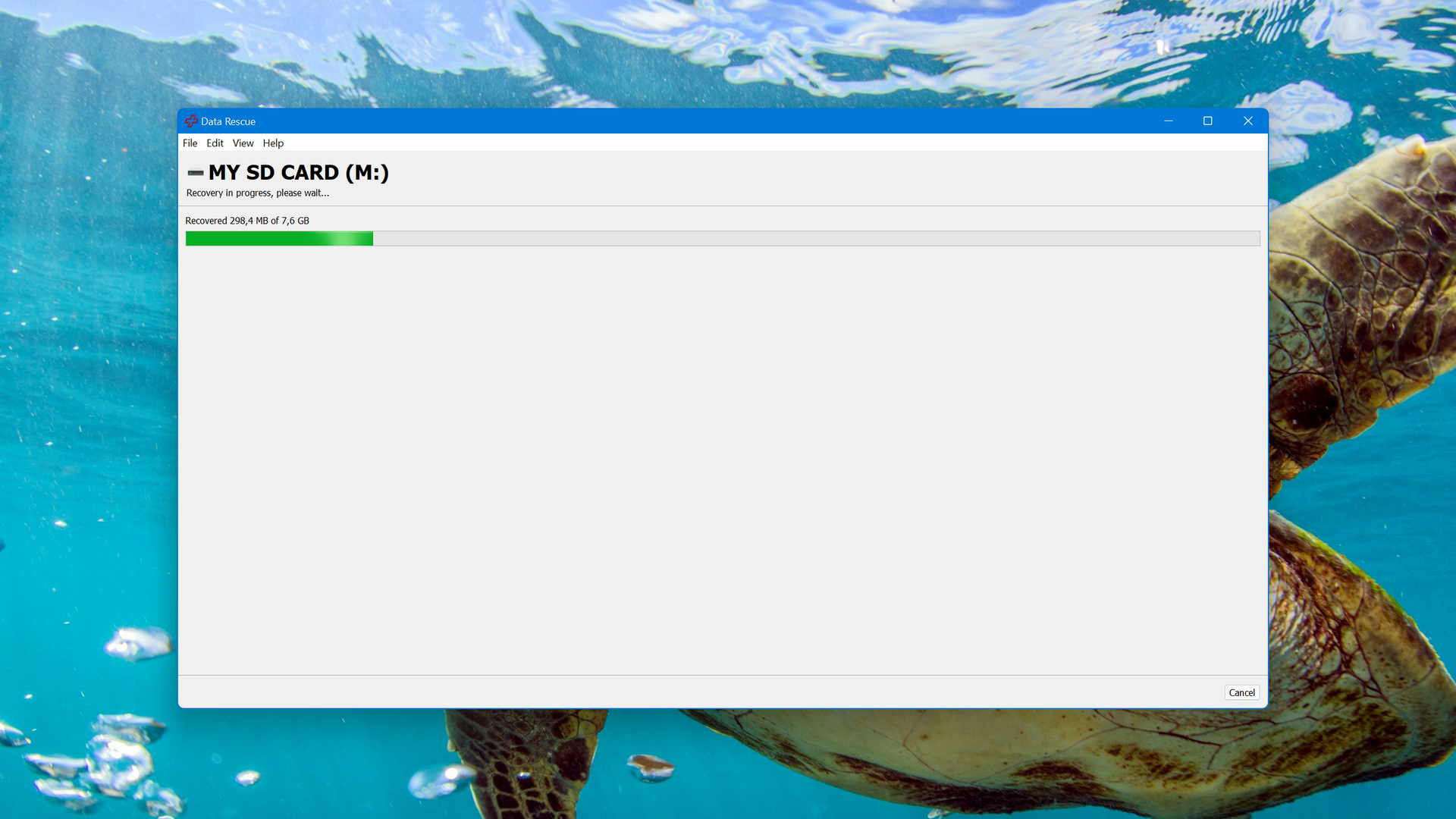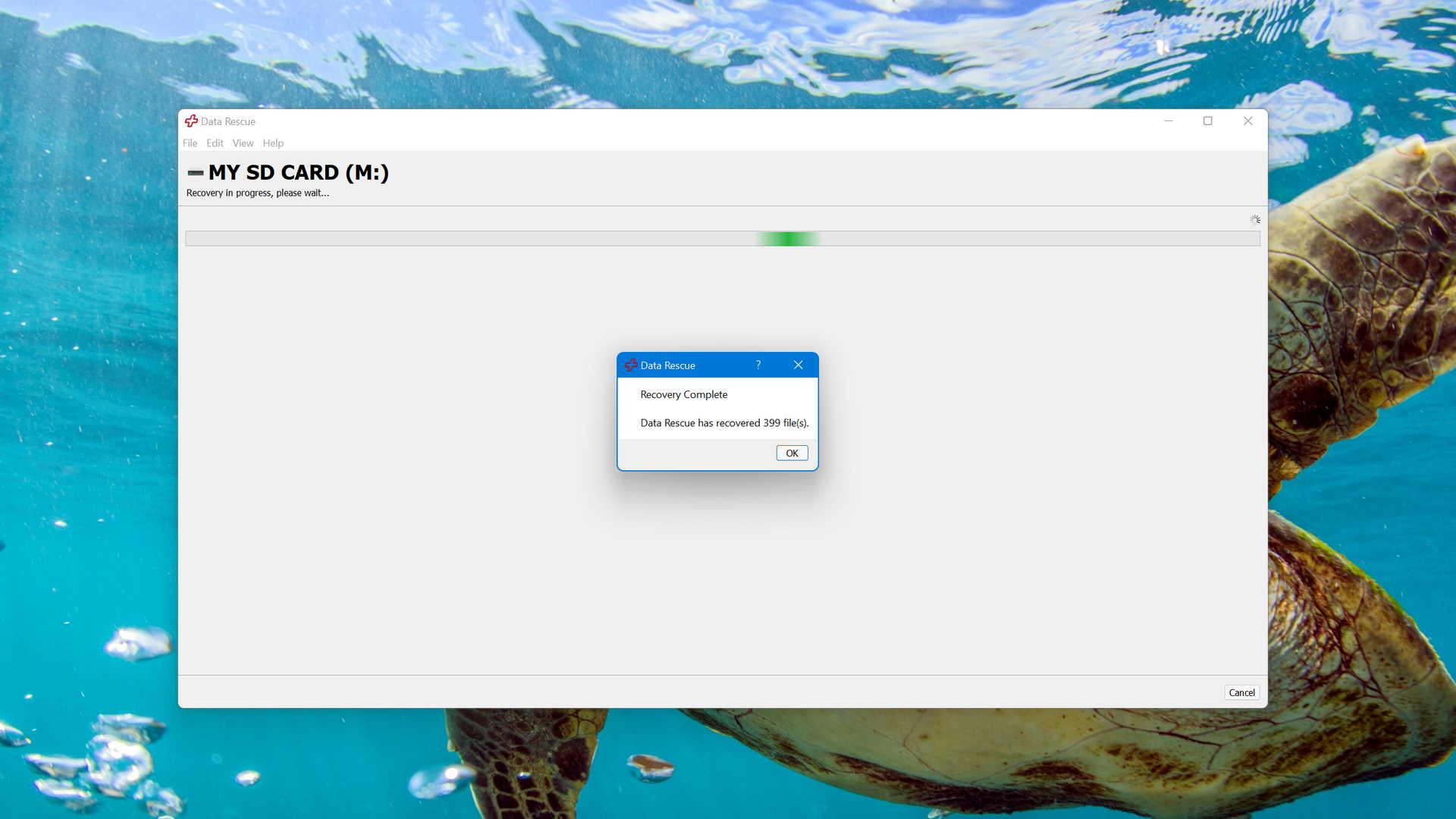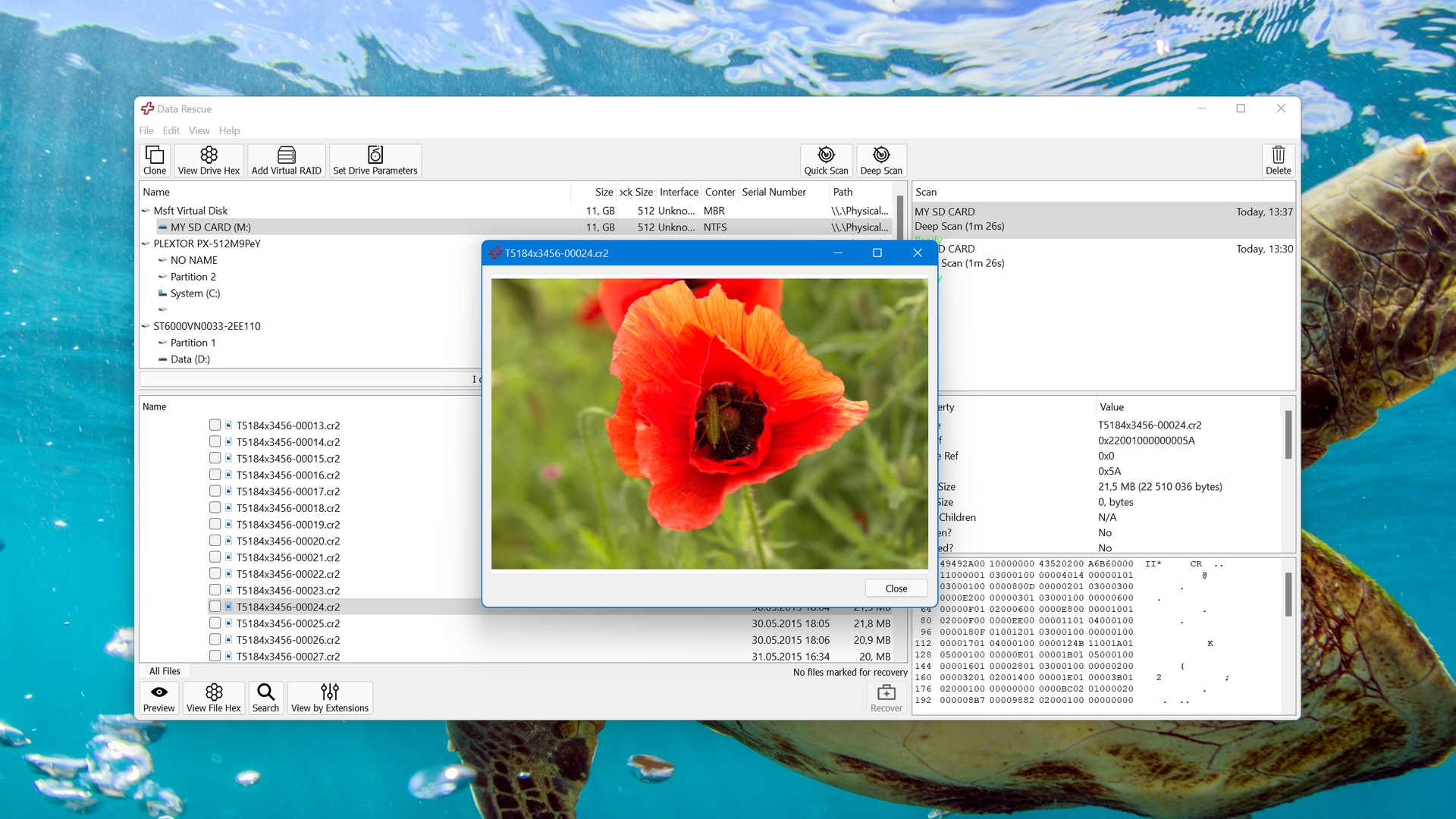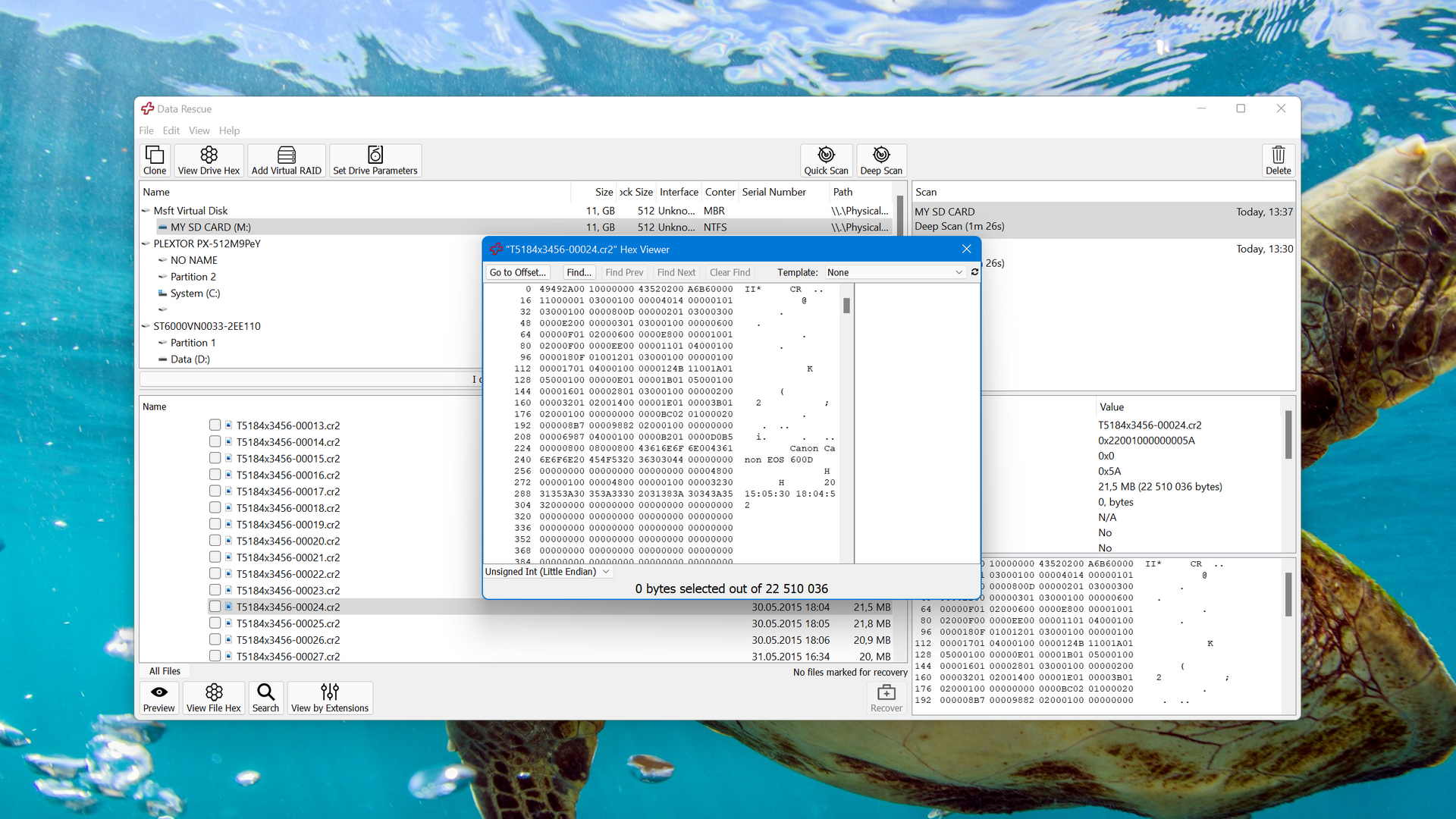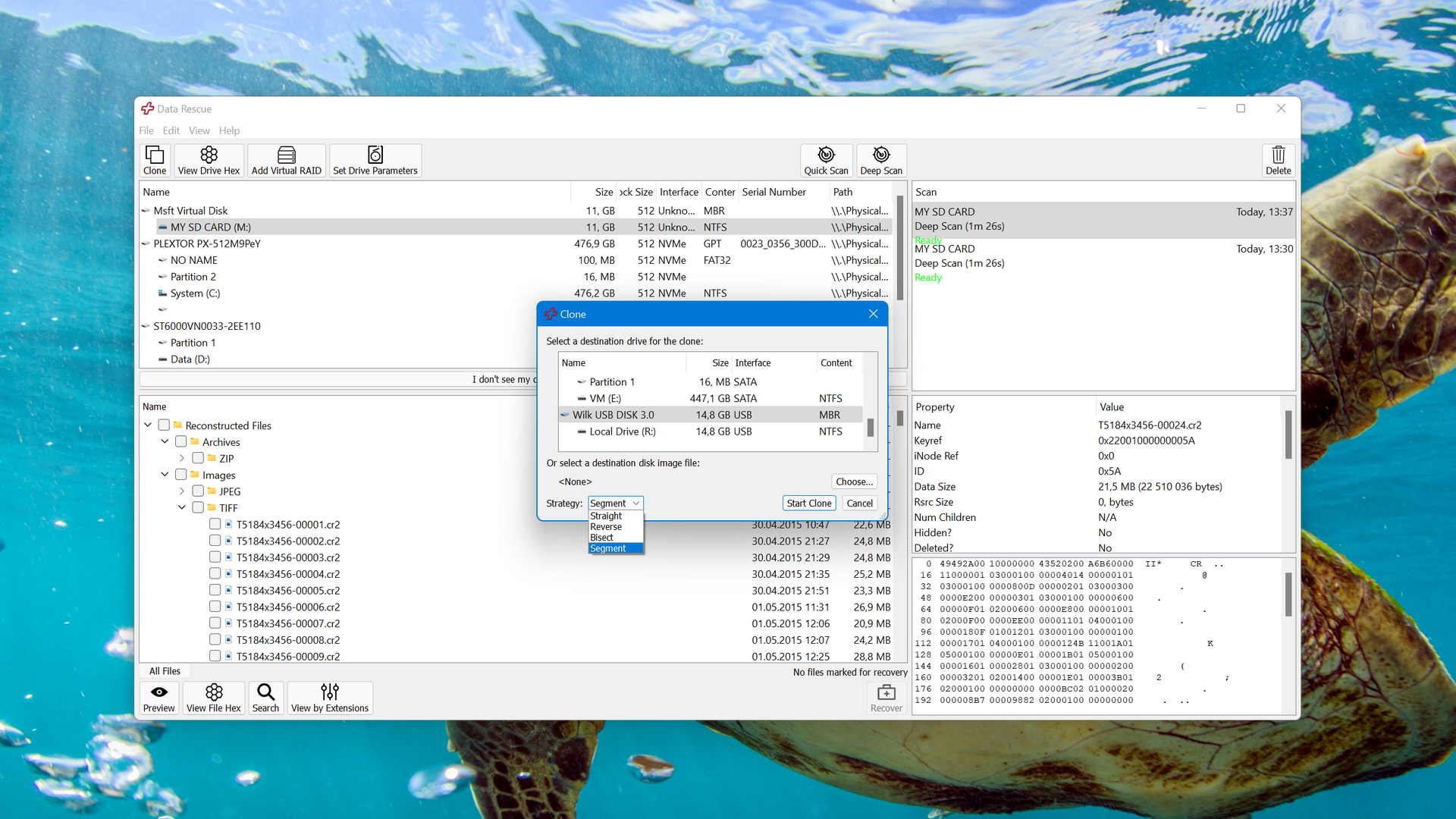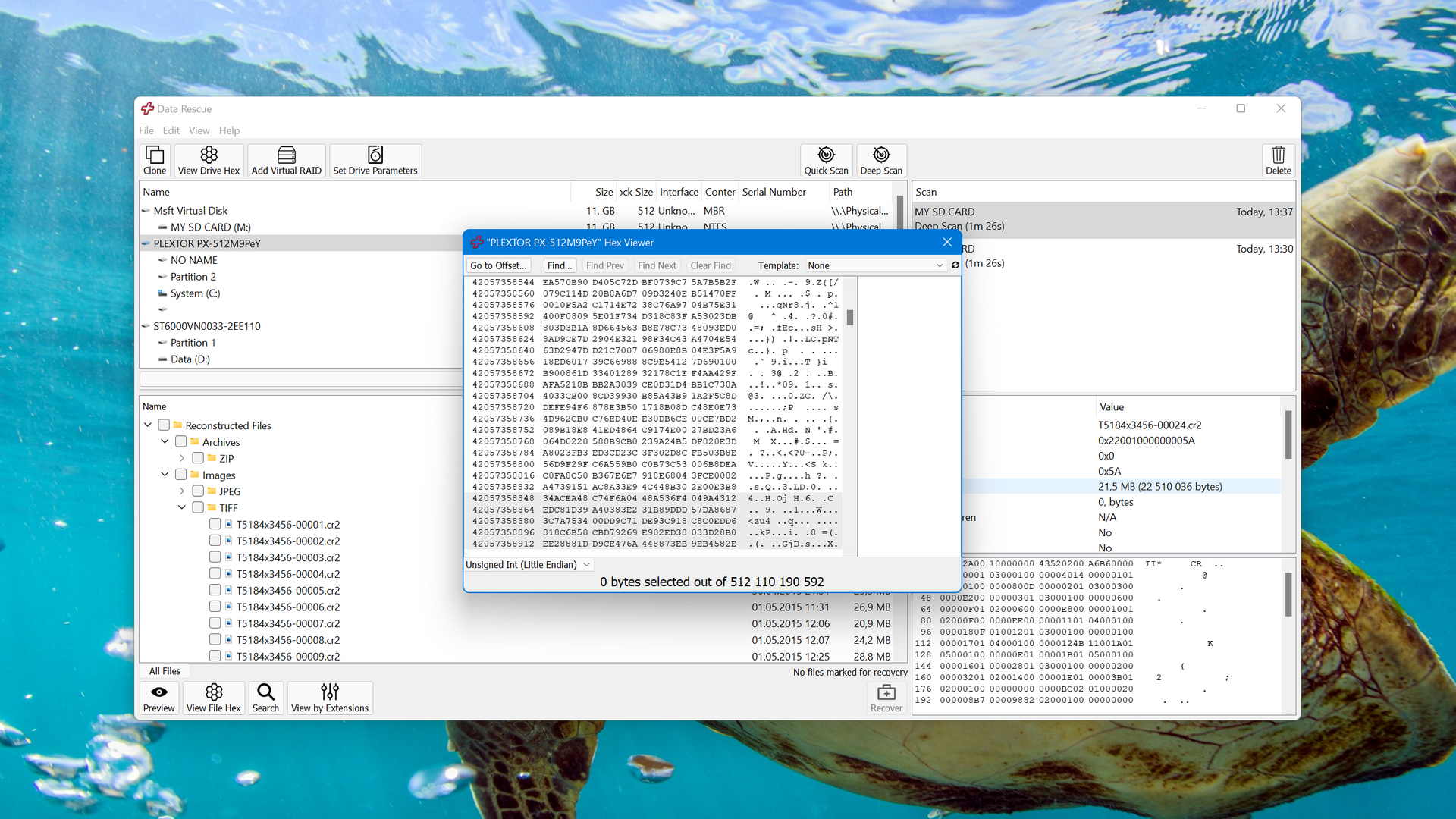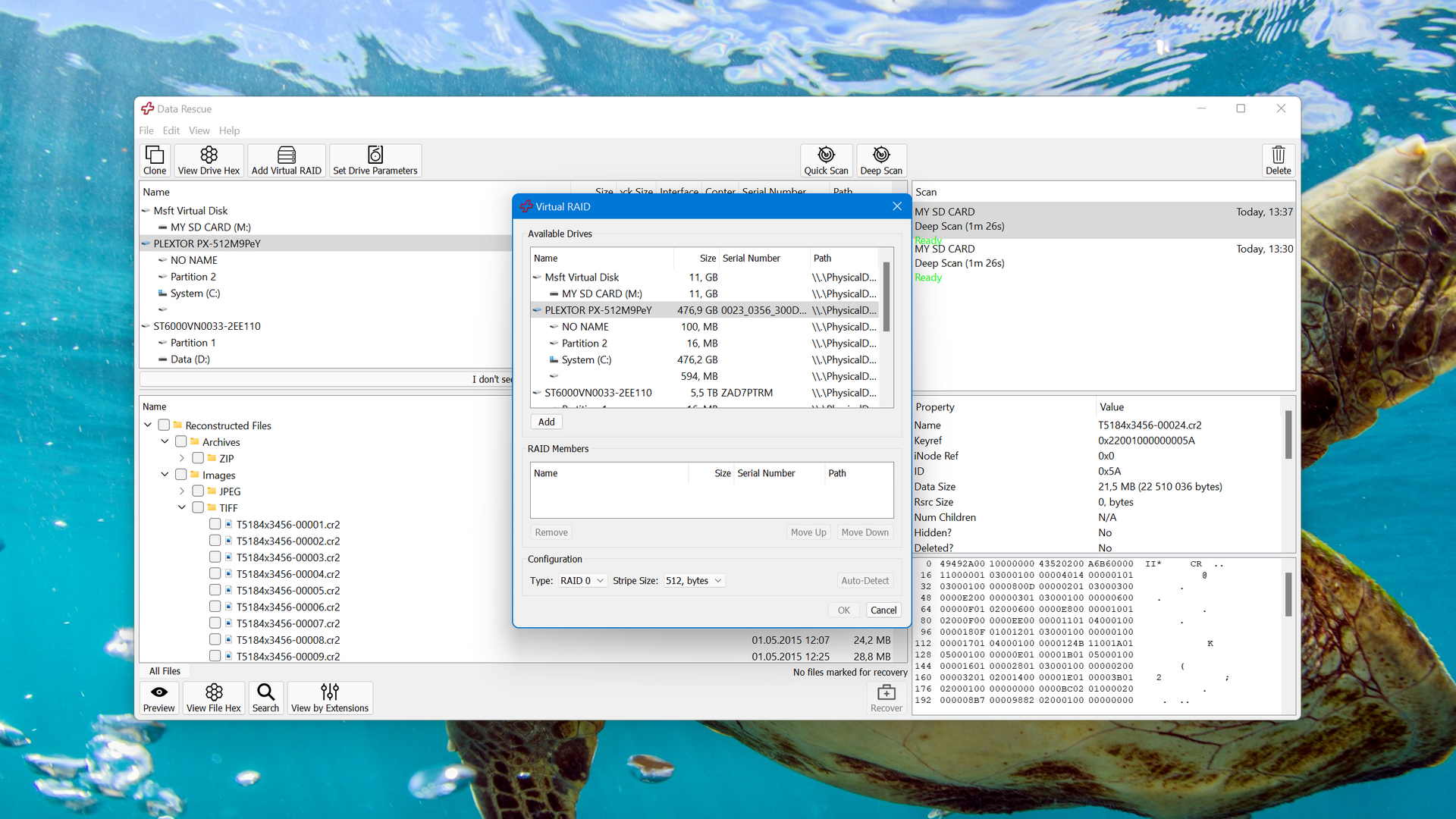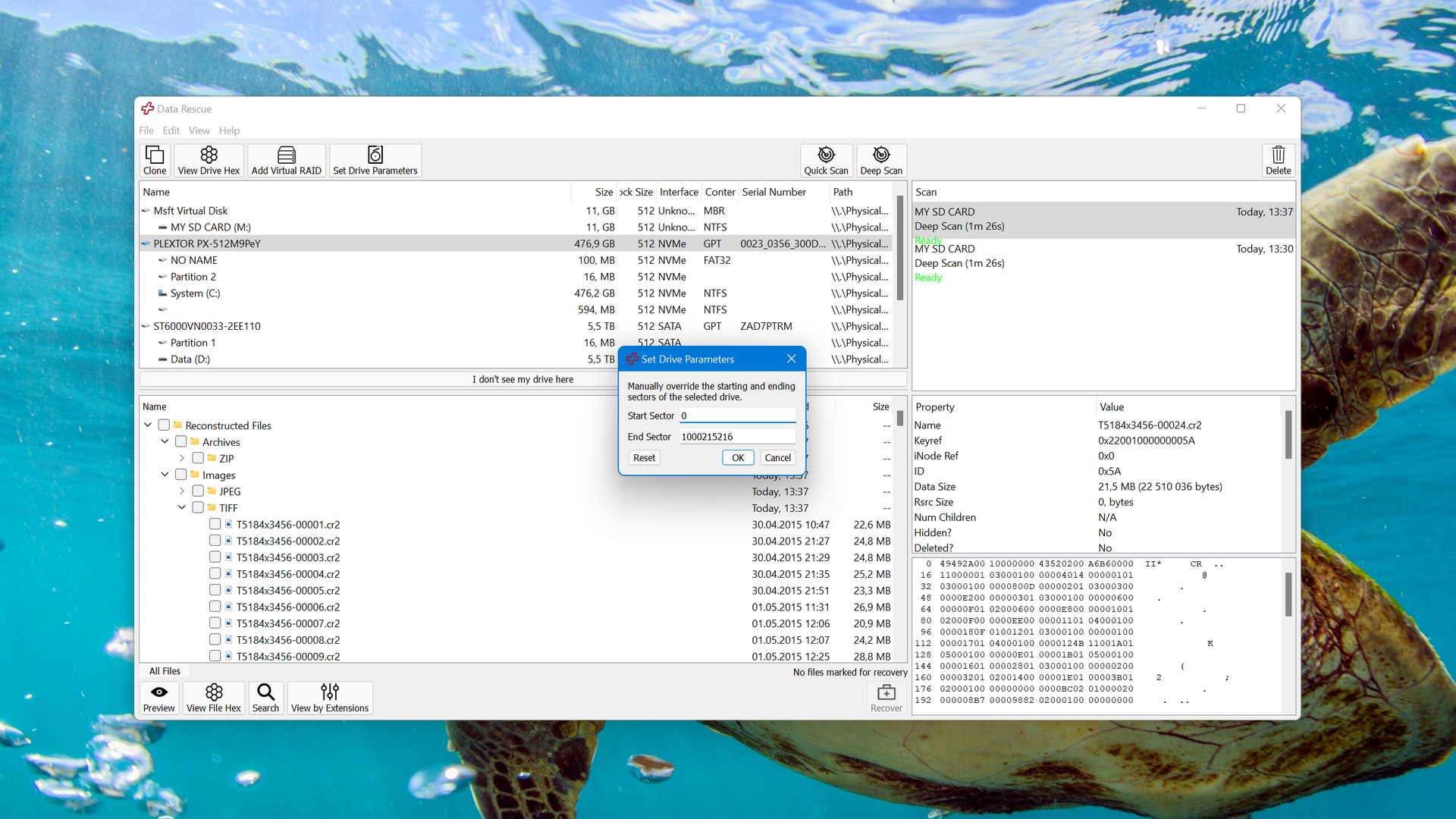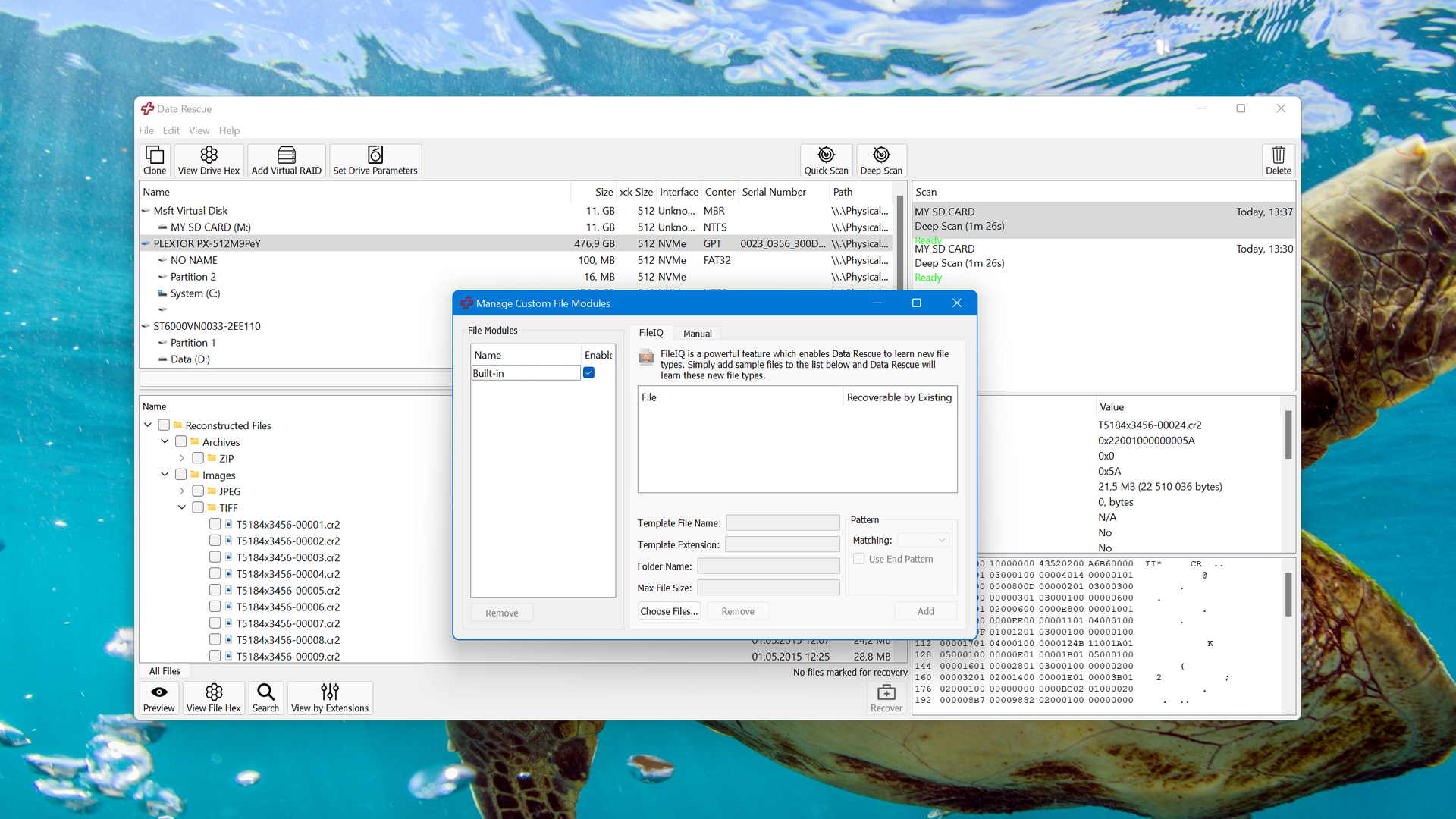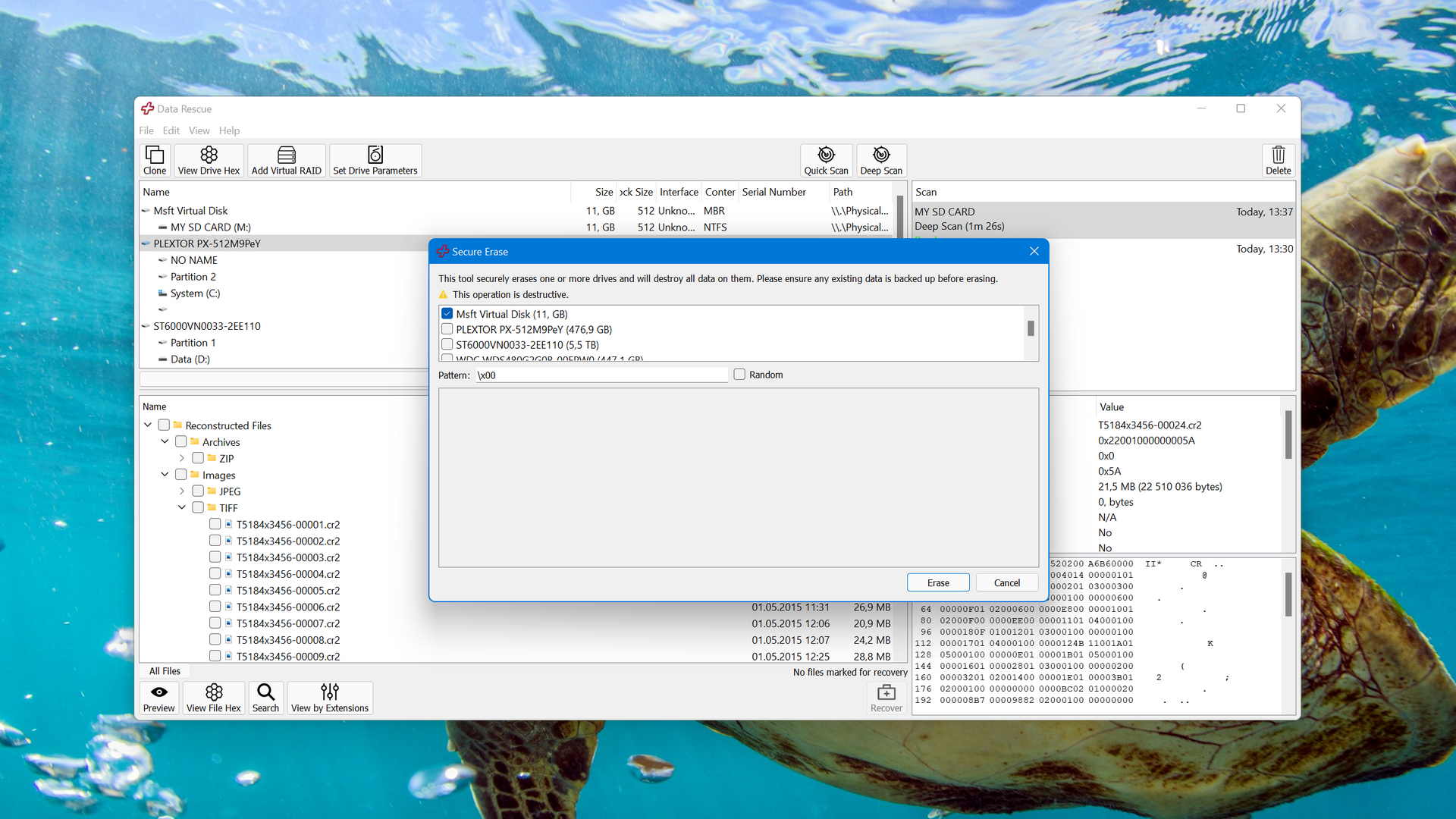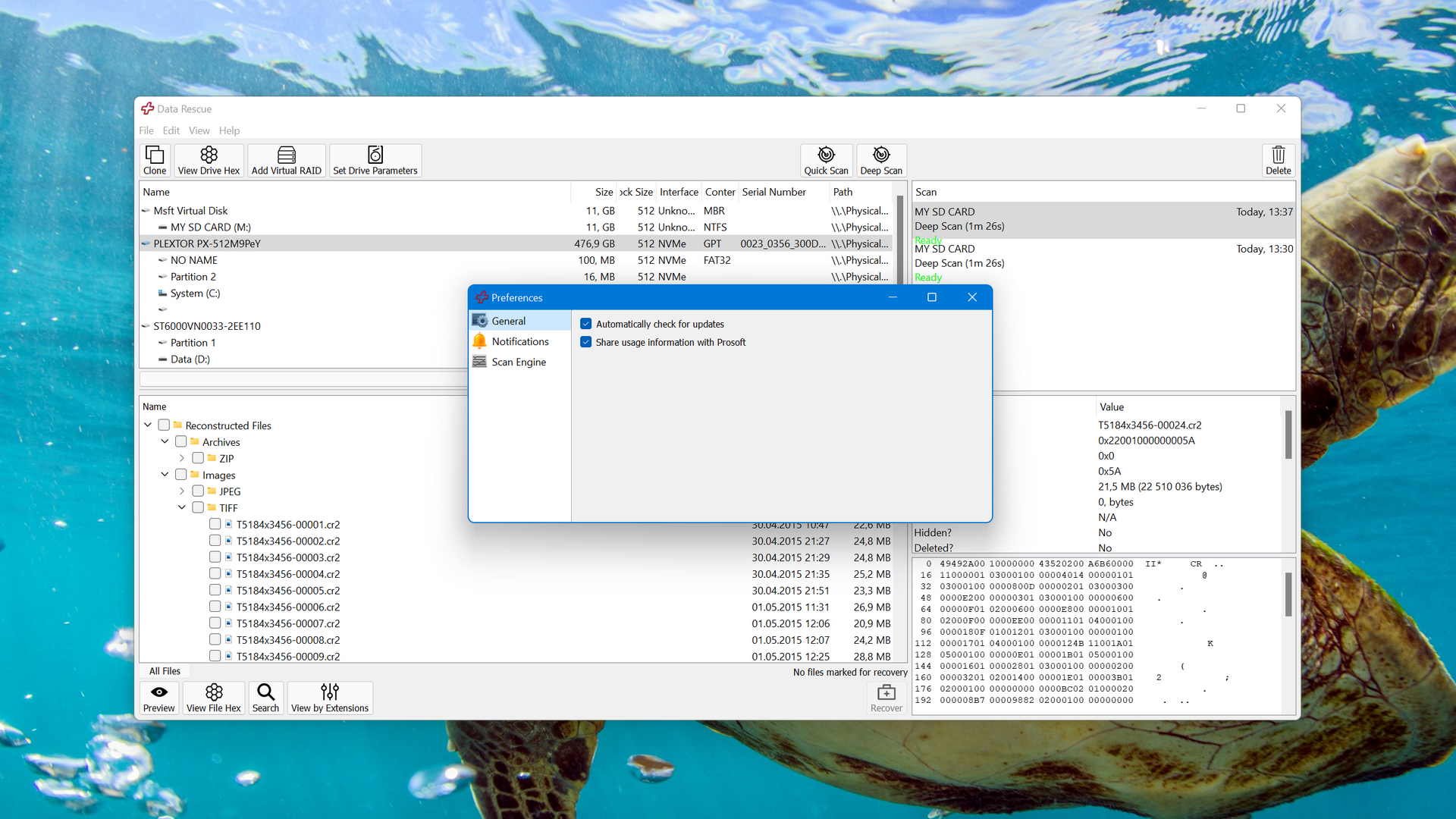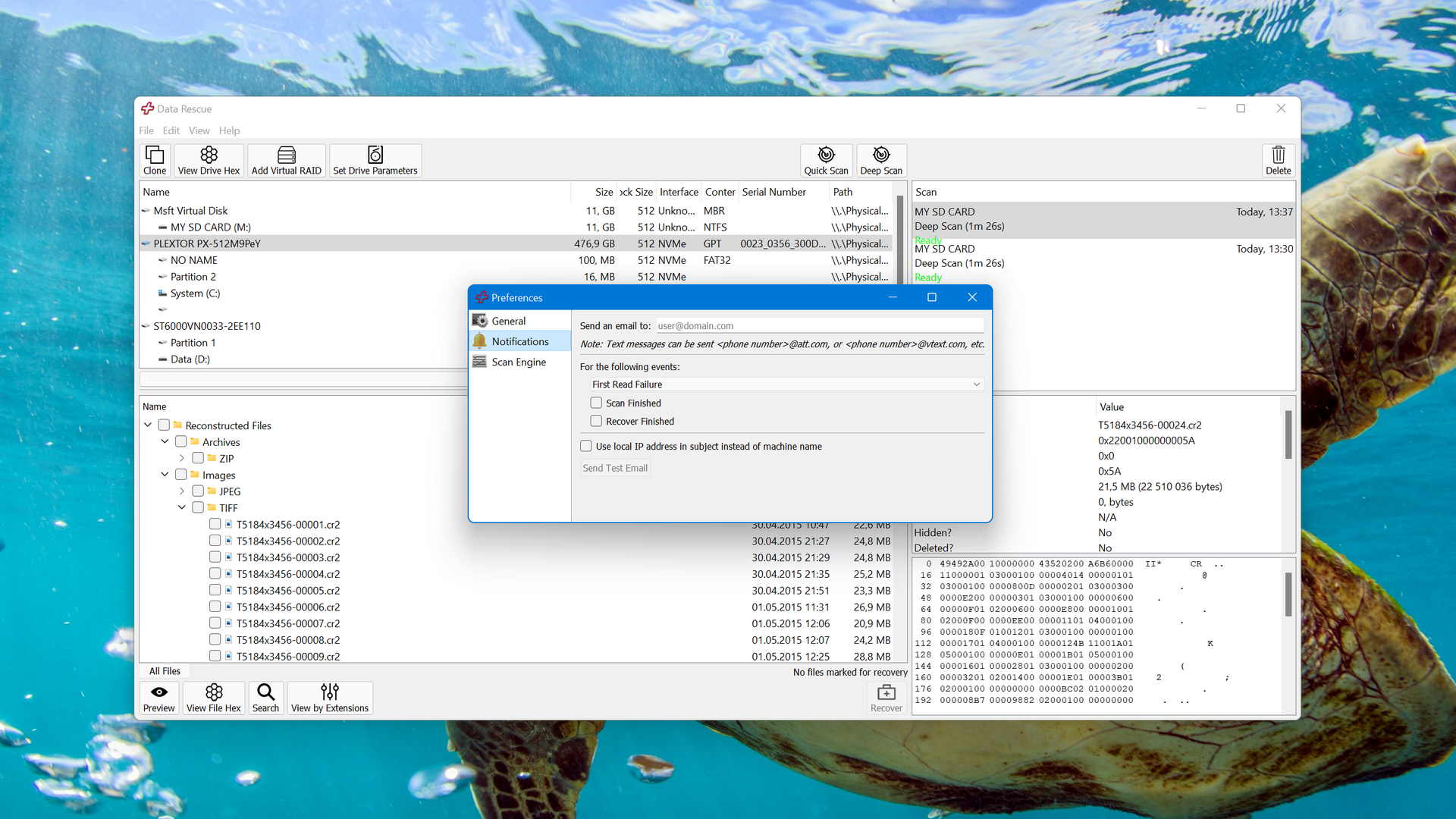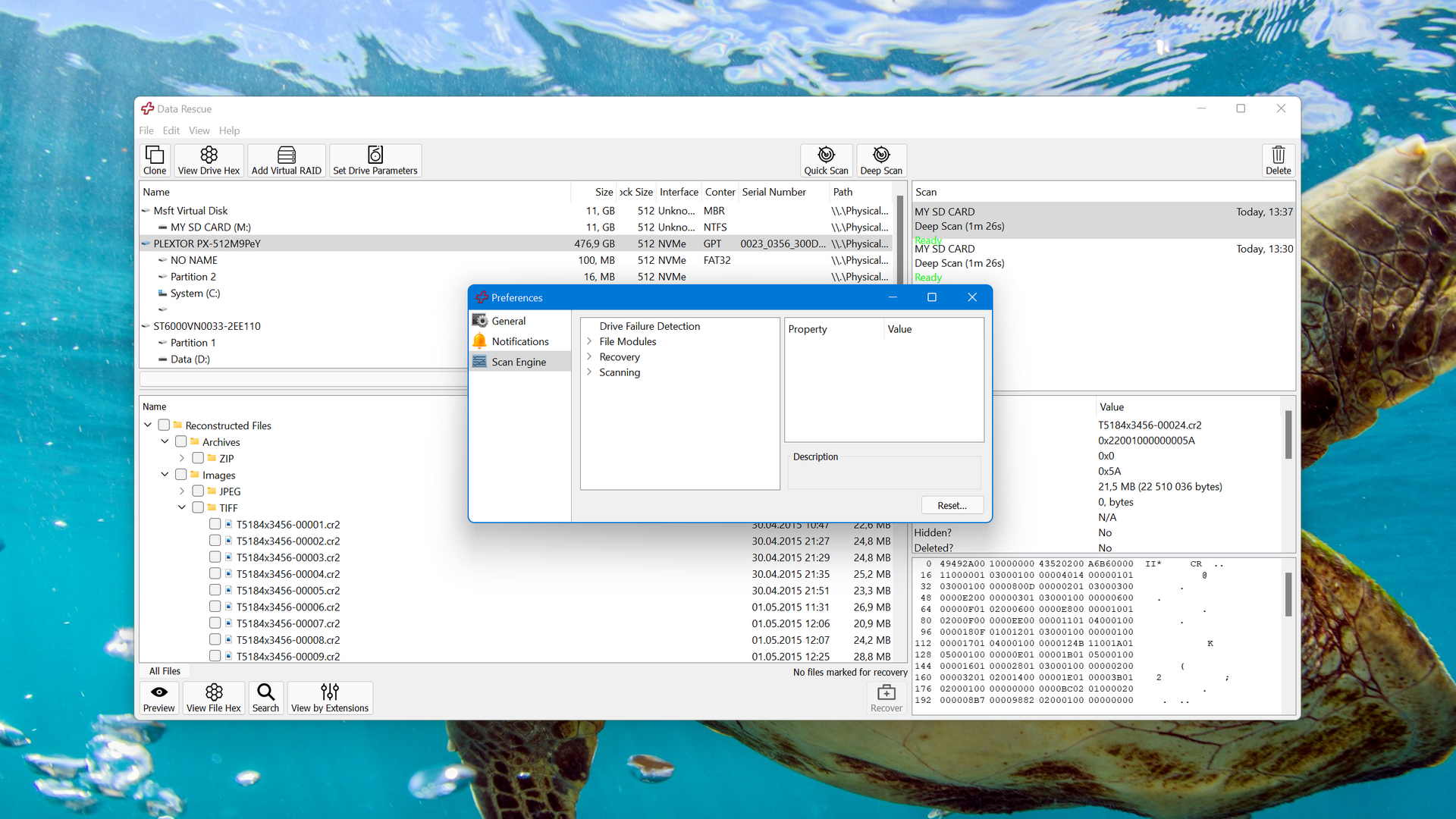Compare We streamlined our evaluation parameters into several clear categories. | Overall Winner | |
| Compatibility | 5 | 4 |
| Recovery Rate | 5 | 3 |
| Usability | 5 | 3 |
| File Type Support | 5 | 3 |
| Speed | 5 | 3 |
| Found files and Recovery quality | 200,000 Found files Good 100% Corrupted 0% Lost 0% | 152,354 Found files Good 52% Corrupted 24% Lost 24% |
| PRO Version | $89.00 / Perpetual Lifetime | $79.00 / month Subscription |
| Read full Disk Drill review | Read full Data Rescue review |
Introduction
A good data recovery application is judged on more than just its recovery capabilities. Users expect a data recovery tool that’s intuitive, versatile, and affordable, among other things. Disk Drill and Data Rescue are data recovery tools that offer you the ability to recover lost or deleted data from internal and external storage devices.
Today, we look at all of the differences between Disk Drill and Data Rescue to determine which data recovery application users will benefit from the most.
Disk Drill is a data recovery application that's favored by many, individuals and businesses alike, for its data recovery performance and ease of use. In addition to data recovery, it includes a number of tools that help users to protect their data and reduce the chances of data loss.
Data Rescue is proposed as data recovery software that can restore your lost or deleted files in just a few simple steps. It was developed by Prosoft Engineering, a company that has been active in the data recovery space since 2002.
Top Disk Drill Pros
Top Data Rescue Pros
Pricing • Business model

| 1 | Distributed as | Freemium | Freemium |
| 2 | Trial version available | pros | pros |
| 3 | Trial version limitations | Recover up to 500 MB for free | Recover up to 1 GB for free |
| 4 | Number of devices per license |
|
|
| 5 | Starting price | $89.00/ Perpetual | $79.00/ month |
| 6 | License model | Lifetime | Subscription |
| 7 | No credit card to try | pros | pros |
| 8 | Money back guarantee | pros | cons |
| 9 | See Plans & Pricing | Pricing details | Pricing details |
Both applications are freemium. Disk Drill allows its users to trial the software by allowing recovery of up to 500MB before a paid license is required. Additionally, all extra features included with Disk Drill like Data Protection, Drive Backup, and S.M.A.R.T. monitoring are available for free. Data Rescue allows users to preview recoverable files and make clones of their drives.
One of the biggest glaring differences between the two is their pricing. Disk Drill offers a lifetime license for $89. Data Rescue, on the other hand, charges users based on how many files they’re recovering, starting at $19 per file. This will undoubtedly become very expensive, especially if you need to recover files in bulk. Moreover, if the files you recovered end up being unusable, it’s money wasted.
One small detail that many overlook the importance of is the money-back guarantee associated with data recovery tools. Disk Drill has a money-back guarantee so you can get a refund if you’re unsatisfied. Data Rescue does not have a money-back guarantee, so all payments are final.
Data Recovery Performance
Each recovery tool has its own way of scanning your drive and recovering your data. Therefore, results will vary based on the application you use. To account for this, we performed a standardized test on each tool to see which one performs the best in a real-world data loss situation. Here are our findings when we compare the results of Disk Drill and Data Rescue against each other.
Clever In-Depth Scan of File Systems

| 1 | FAT32 partitions | Full support | Not supported |
| 2 | exFAT partitions | Full support | Not supported |
| 3 | NTFS partitions | Full support | Not supported |
| 4 | EXT4 partitions | Not supported | Not supported |
| 5 | HFS+ partitions | Not supported | Full support |
| 6 | APFS partitions | Not supported | Not supported |
A deep scan is a recovery method that aims to restore the original folder structure and file names of your data using the file system. Disk Drill performed well, as it was able to restore the filenames and folder structure of data recovered from FAT32, exFAT, and NTFS partitions. It could not, however, do the same for EXT4, HFS+, or APFS partitions. Data Rescue seems like it had success with scanning and recovering data from HFS+ partitions, but failed to do the same for any other file system.
Quick Scan of File Systems

| 1 | FAT32 partitions | Full support | Not supported |
| 2 | exFAT partitions | Full support | Poor performance |
| 3 | NTFS partitions | Full support | Full support |
| 4 | EXT4 partitions | Partial support | Not supported |
| 5 | HFS+ partitions | Not supported | Partial support |
| 6 | APFS partitions | Not supported | Partial support |
A quick scan intends to recover data that was recently deleted from your drive. During our tests, Disk Drill demonstrated superiority with this scan type as it offers full support for FAT32, exFAT, and NTFS partitions. It also partially supports quick scanning of EXT4 partitions. Data Rescue’s quick scan doesn’t support as many file systems, only offering full support for NTFS partitions and partial support for HFS+ and APFS partitions.
Other Scan Types

| 1 | The number of file types supported by signature scan | Some (≈400) | Some (≈150) |
| 2 | BitLocker support | Full support | Not supported |
| 3 | Windows shadow copies scanning | Not supported | Not supported |
| 4 | Scan for lost partitions | Full support | Not supported |
| 5 | Recovered files' labeling | Full support | Not supported |
| 6 | Partial file recovery | Full support | Full support |
| 7 | Disk images: scan and recovery | Full support | Full support |
Both data recovery tools offer recovery by file signature, with Disk Drill supporting more file types than Data Rescue.
Disk Drill is capable of recovering data from drives encrypted with BitLocker. Data Rescue does not support this, so encrypted data would remain lost. Disk Drill can also scan for lost partitions, whereas Data Rescue only focuses on the recovery of data.
In terms of other scan types, Disk Drill has more to offer its users across the board.
Real-Life Recovery Challenge

| 1 | Raw photo recovery | 100% | 36% |
| 2 | Video formats recovery | 99% | 51% |
| 3 | Document formats recovery | 84% | 67% |
The real-life recovery challenge shows us that Data Rescue received a below-average score as it severely struggled to recover most of our raw photos, namely CR2, TIFF, DNG, and MRW. Contrarily, Disk Drill was able to completely recover them. Part of Data Rescue’s performance may be attributed to the fact that it hasn’t received an update since 2021, whereas Disk Drill is updated regularly to ensure it supports modern file formats.
Feature Comparison
To remain a competitive option, data recovery tools must appeal to consumers by being better than their rivals. This includes how easy the software is to use, what extra features come with it, and how often it’s updated. As part of our review process, we account for all of this. Here is a summarised look at what each application has to offer its users.
Both applications have fairly good Karma scores. They’re updated regularly and maintain a changelog of all the updates made for users to review. Data Rescue has better customer support channels, as it offers support via helpdesk, live chat, and phone. However, it’s not well known and doesn’t have an online market share, causing it to lose some points.
In terms of Usability, Disk Drill beats Data Rescue by a landslide. Data Rescue uses a very outdated interface that doesn’t allow users to easily access what features it includes from wherever they are in the software. Since it doesn’t have a thumbnail view when reviewing discovered data, users need to manually preview each file.
Disk Drill allows users to sort results and filter recoverable data based on file type. It’s also accessible to a wider range of users thanks to it being available in multiple languages.
Disk Drill and Data Rescue are neck and neck. You can recover data from internal or external hard drives and solid-state drives, removable USB sticks, and memory cards. Neither of them supports recovery from iOS and Android devices and both only partially support RAID recovery.
Other notable recovery features help complement data recovery by making the process easier. Disk Drill has many additional features to offer, such as a handy recovery chance prediction indicator next to each file and data protection to safeguard selected data going forward. Data Rescue does have some extra features, like RAID reconstruction, but this is the only feature offered that Disk Drill doesn’t already support.
There aren’t many extras offered by Disk Drill or Data Rescue. With Disk Drill, you can use its active disk monitoring feature that reads your drive’s SMART data to regularly check its overall health. Data Rescue allows you to clone your disk, as well as securely erase any remaining data on available parts of the drive.
Wrapping Up
After being beat by Disk Drill in almost every area, Data Rescue doesn’t have much going for it. Disk Drill is easier to use, feature-rich, and more importantly, better at recovering your data.
Data Rescue’s pricing model is in dire need of an update. Paying $19 for a single file recovery (or $49 for 100 file recoveries) becomes extremely expensive if the software is used regularly. Even if you upgrade to the Unlimited License, the recovery performance shown isn’t nearly enough to justify the $399/year price tag.
In conclusion, Data Rescue has a lot of room for improvement if it wants to compete with data recovery applications that are more effective, budget-friendly, and user intuitive. In a competitive market, without steady and continuous improvement, applications like Data Rescue gradually fall behind in desirability.
Disk Drill is feature-rich and demonstrates great recovery performance in any data loss scenario.
Visit developer's websiteWhy choose Disk Drill
Read full Disk Drill for Windows reviewWhy choose Data Rescue
Read full Data Rescue for Windows reviewMore software comparisons
Our intention is to provide objective and fact-based reviews of the data recovery tools available on the market. Check out some of our other comparisons below.
- 46 publishings
- Auckland, New Zealand
Jordan Jamieson-Mane is a content writer with a focus on technology-related content. He has spent much of his life studying and working with all types of technology. During his time as a writer, he has written countless articles in the field of data recovery, breaking down complex topics into articles that are easy to understand.
When he's not writing articles on data recovery, Jordan enjoys traveling the world, reading books, and building websites.
- LC Tech FILERECOVERY Professional Review – Can It Compete with Modern Recovery Tools?
- UFS Explorer Review – A Powerful Recovery Tool With Lots to Offer
- Cisdem Data Recovery for Windows Review – A Capable Copy
- AnyRecover Data Recovery Review – A Polished Solution for Basic Users
- iBoysoft Data Recovery Review: Not Much to Offer
- Houston, Texas, United States
Nikolay Lankevich has over 15 years of strong experience in various fields and platform includes Disaster Recovery, Windows XP/7. System analysis, design, application (Inter/Intranet) development, and testing. Provided technical supports on desktop and laptops on Win-XP and Macintosh for about 2000 employees.


